






By MARISSA SWEATLAND Staff Writer
“Honor Flight is a great and healing experience for our veterans,” Cathy Berkshire, president of Honor Flight Northeast Indiana, declared. “They get a chance to tell their stories to their guardians and talk with other veterans about their experiences.”
The local organization completes four Honor Flights per year, transporting an average of 340 Veterans per year. Honor Flight is a non-profit organization that flies veterans to Washington D.C. to see the memorials built in their honor.
“I encourage all of the veterans to reach out and touch their memorial,” Berkshire explained. “It is a chance to say goodbye to their brothers in arms that they lost during their service.”
In its early stages, Honor Flight was formed to fly World War II veterans to Washington D.C. to see the, at the time, newly constructed war memorial.
“We now take any veteran that wore the uniform and received an Honorable Discharge,” Berkshire clarified. “This is a free trip for any veteran that wore the uniform and was Honorably Discharged.”
The trip still includes a stop at the World War II Memorial, but also includes stops at: the Marine Corps Memorial, Air Force Memorial, Korean Memorial, Vietnam Memorial, FDR Memorial, the Women in Military Service Memorial and Arlington National Cemetery.
“Our itinerary changes from time to time, but we try to include as many memorials as we can,” Berkshire declared.
Berkshire is no stranger to


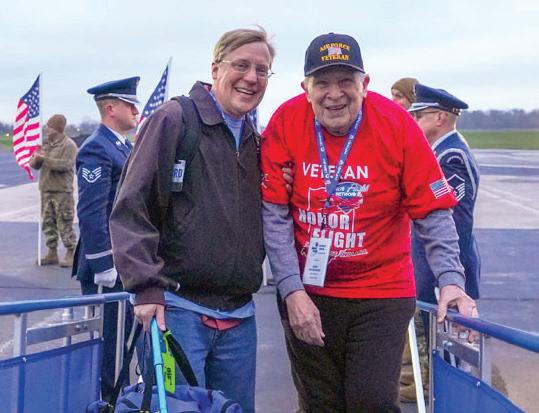
service. She has strong military ties through family members who served during World War II. She has been involved with the organization since March 2009 and joined the board a few years later.
“I serve our veterans in memory of loved ones that served in the military and in honor of loved ones that have served and are still living,” Berkshire explained.
To be considered for an Honor Flight, veterans can submit an application online or submit a paper application. Once the veteran has an application on file, the organization completes a medical review and is accepted into the database. The organization selects veterans for their Honor Flight based on when they served: World War II, Korea, Cold War, Vietnam, etc.
“We have veterans and guardians
Continued on page 2
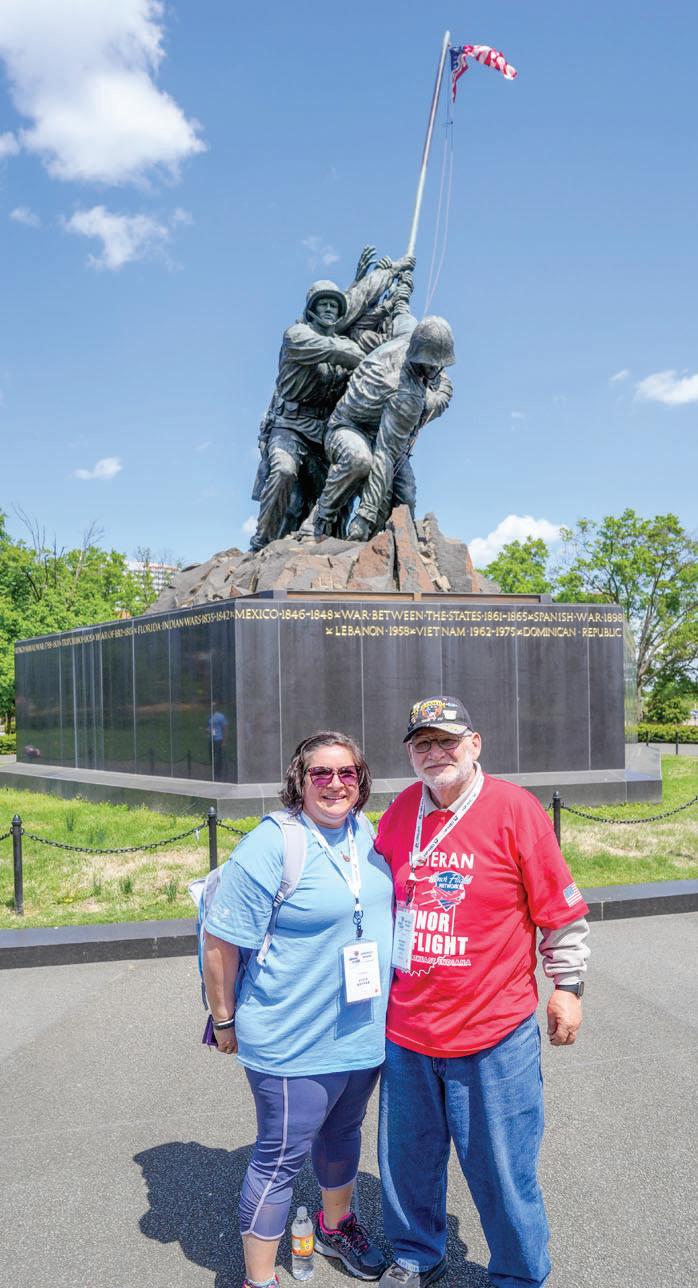
the Marine Corps War Memorial
Fisher’s Honor Flight experience. The Marine Corps War
is just one of many memorials Veterans visit.

By LAURIE LECHLITNER Staff Writer
“I call myself a professional volunteer,” stated Chris Morehouse, Silver Lake. “My advice to anyone volunteering is to pick an area that you’re passionate about and give 110%. If you just jump in where needed, chances are you won’t stay for the long haul. Volunteers need to be committed and to stick to it. Volunteering is a great way to give back to the community.”
One of the organizations in which Morehouse volunteers is Echoes of the Past. “That’s an antique tractor club. It’s a funny story how I got involved in that organization. My husband, David, collects old antique tools. He volunteered to display them for their events. He was attending a meeting, and they decided they needed someone to promote their events and take pictures. I volunteered to help.”
In the past six years that Morehouse has been volunteering for Echoes, she’s become more and more involved. She’s the go-to person when people have questions of any kind. She also helps organize the events and works hard to see that kids have a great time.
“We have three community events each year: Summerfest, Fall Festival, and our Cookies with Santa. We also participate in the Kosciusko County Fair. At summer and fall events we display antique tractors, in winter we give sleigh rides. At the fair we feature tractor-churned ice cream using an old fashioned ice cream maker.”
The Summerfest in August
is a hit for the entire family.
“We have live entertainment and a vintage market. We have corn hole competitions We also host both the tractor pull and garden tractor pull.”
Morehouse has a special place in her heart for kids. “I help structure and organize the games for young people. We have the kids’ tractor driving experience. We also have a coin competition where kids try to find gold coins and quarters in the threshed wheat. This also gives them a chance to see an antique thresher and the old way of making straw.”
One of her jobs is to get donors for the particular events. “Our events are free to the public. But they are not without expense. For example, Lake City Bank donates our quarters for the kids’ coin hunt, and they also donated some coolers. When I get a sponsor, I’ll stick a banner up telling the community that a particular organization is the donor. We couldn’t do it without them.” She’s also in charge of the advertising for the events.
Echoes events are held at Dan Ransbottom’s schoolhouse on the corner of County Farm Road and 700 South. “He expands our area each year to accommodate the crowds of people who attend.”
Morehouse loves working with farmers. “They have a unique faith. No matter the weather, or how adverse the conditions, they keep plugging away, working hard, trusting God for the outcome.”
The Morehouses love their home church, Beaver Dam Community. “I volunteer for our Wheels on Fire team that

raises money for local cancer patients.” She also volunteers as the front desk receptionist at Cancer Services, Warsaw. She oversees Toys for Tots through Echoes. The Morehouses have also volunteered in a variety of service clubs.
“I love being a grandma to our four grandkids. Seeing the love my daughter has for her children warms my heart.”
TO
— Chris Morehouse, Silver Lake, is the go-to person for Echoes of the Past, an antique tractor club. She loves volunteering and believes her work is a way to give back to the community. Photo provided by Chris Morehouse.
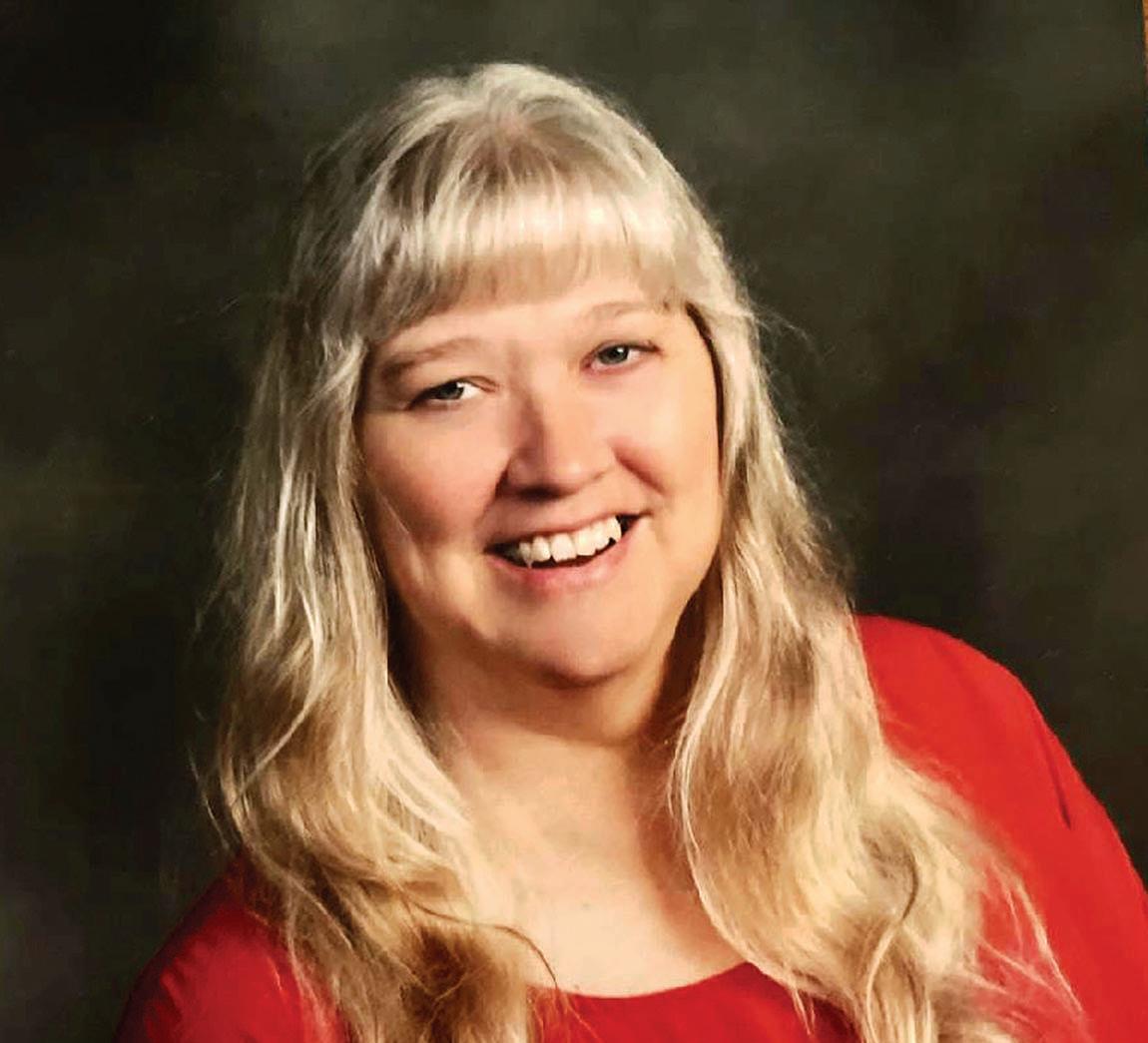
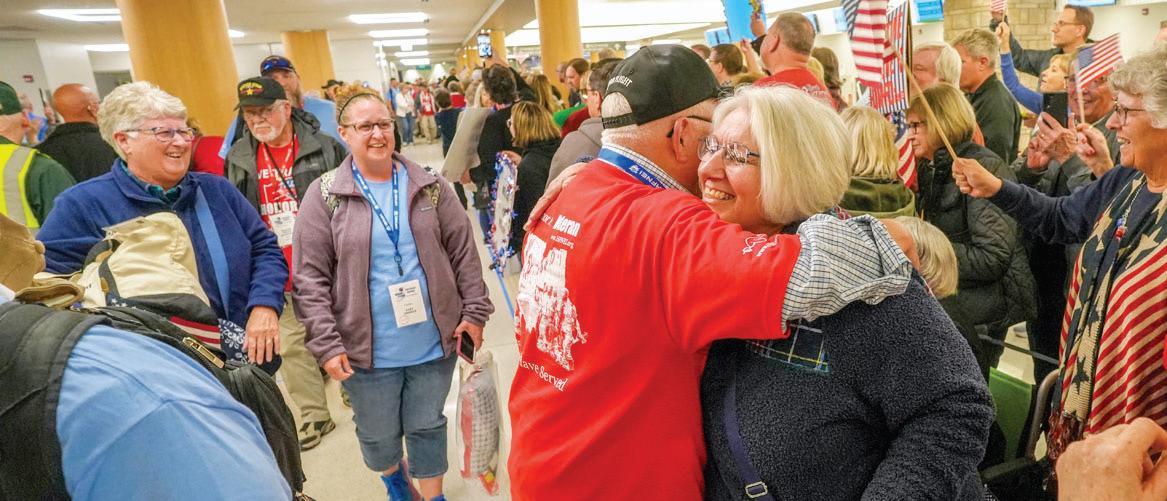
Continued from page 1
complete a few forms prior to their flight, we answer their questions and let them know a little bit about what to expect during the day,” Berkshire mentioned. “We let the veterans know that it is okay not to be okay during their Honor Flight, we are all there to help them. This can be a very emotional and healing day for them.”
Guests of the Honor Flight arrive at the 122nd Air National Guard base in Fort Wayne. They board an American Airlines Airbus A321 for the approximately an hour flight into Ronald Reagan National Airport where four motor-coaches pick the veterans up for the final leg of their travels to Washington D.C. The crew of veterans will then have the opportunity to tour
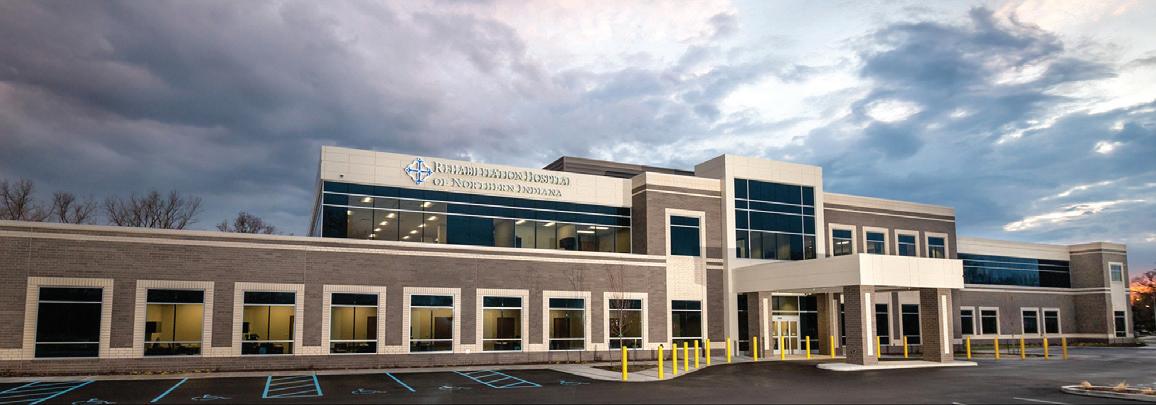
numerous memorials, including the Iwo Jima Memorial. After a long day of touring, veterans are shuttled back to Ronald Reagan National and flown home where they are received at Fort Wayne International Airport with a hero’s welcome from community members.
“I think these trips help with the healing process for our veterans and their families. We encourage the community to get involved with the welcome home — this is crucial to the healing process,” Berkshire explained. “Our veterans never had a welcome home when they returned, so this is very important for them to realize and understand that we honor them for their service.”
Melanie can brighten up the Interior of your home.
Melanie can brighten up the Interior of your home.
Melanie can brighten up the Interior of your home.
You Have A Choice When It Comes To Rehabilitative Care
We’ve Done Everything To Make Your Decision Simple
Walls
Walls
Ceilings
Ceilings
Walls
Window And Door Trim
Window And Door Trim
Ceilings
Stairways
We are the only free-standing acute rehabilitation facility serving Northern Indiana and surrounding areas.
Stairways
Window And Door Trim
Woodwork Staining
Veterans interested in applying for an opportunity to participate in an Honor Flight can submit their application online at app.hfnei.org/apply/veteran. Veterans who would like to request a paper version of the application can contact the organization by calling (260) 633-0049. For more information about Honor Flight Northeast Indiana, visit hfnei.org/.
Stairways
Woodwork Staining
Garage And Workshop Floors And Walls
Garage And Workshop Floors And Walls
Our unique 40-bed design provides a comfortable and responsive environment.
Small Patch Repair
Woodwork Staining
Small Patch Repair
Drywall Repair
Garage And Workshop Floors And Walls
Drywall Repair
Small Patch Repair
Great Service – Reasonable Rates
Great Service – Reasonable Rates
Drywall Repair
References Available Upon Request. 574-304-5075
References Available Upon Request. 574-304-5075
Great Service – Reasonable Rates
References Available Upon Request. 574-304-5075
“Nearly every veteran we talk to let us know they were happy to serve in our military and would do it again, if they could. A lot of our veterans are overwhelmed with the kindness and compassion they experience on an Honor Flight,” Berkshire reported. “They are shown respect, honor and compassion. They are truly honored and thanked for their service.”
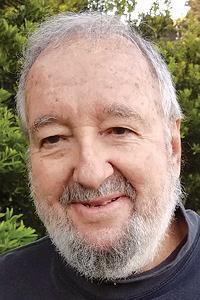
By RANDAL C. HILL
It was on a stormy Thanksgiving Eve in 1971 that a person who called himself Dan Cooper leaped into legend in a bizarre escapade that remains history’s only unsolved commercial-airline hijacking.
The night that changed aviation history began in Portland, Oregon, when a well-dressed 40ish man carrying a briefcase approached the flight counter of Northwest Orient Airlines and gave his name as Dan Cooper. (In Canada, “Dan Cooper” was a comic-book hero.) He became D. B. Cooper of popular culture later, when a reporter covering the hijacking mistyped the name from a police source.
Never asked to show identification or to open his briefcase, he paid cash for a one-way ticket on a Boeing 727 to nearby Seattle. As one of 37 passengers, he sat alone in the last row. Once airborne, Cooper passed a folded note to 23-yearold Florence Schaffner, an attractive steward accustomed to men hitting on her. When she tucked the unread message into her purse, the soft-spoken stranger said, “Miss, you’d better look at that note; I have a bomb.”
The note confirmed his threat, and Cooper ordered Schaffner to sit beside him. When she did, she asked to look inside the briefcase. There she saw a tangle of wires, a battery and six round red sticks. The passenger said that, once they
landed in Seattle, he wanted $200,000 cash in a knapsack, as well as back and front parachutes. If his demands weren’t met, he warned, he would blow up the plane.
Schaffner took the note to the captain. When she returned, Cooper had donned wraparound sunglasses.
It was raining hard when the plane touched down in Seattle. The requested cash was brought onboard, the 727 was refueled, and the remaining passengers were released. The hijacker then ordered the captain to fly to Mexico City.
Cooper was obviously familiar with the aircraft. He ordered the pilot to fly the plane below 10,000 feet and with the wing flaps set at 15 degrees.
(This would keep the 727 under 200 knots—230 miles an hour.)
Cooper soon strapped the cash to himself, then slipped on
the parachutes. He promised a frightened steward that he would dismantle the bomb or take it with him later, but he did neither.
Over the rugged terrain of southwestern Washington, he moved to the aft stairs, which allowed passengers to disembark from the rear of the airliner. He then leapt into the darkness amid a howling rainstorm and into an area of dense forests, canyons and white-water rapids. He was never seen again.
Rivaling an Alfred Hitchcock fantasy, the Cooper incident has achieved cult status in a Robin Hood sort of way. Never mind that the hijacker threatened to murder people, or that he made off with today’s equivalent of $1.5 million in cash.
Some folks have pronounced him a harebrained daredevil, jumping to certain death in the

worst imaginable weather. Others, though, have maintained that D. B. Cooper deserves to
be seen as a courageous establishment-beater who’s possibly still alive.

By CECIL SCAGLIONE
Mature Life Features
If you’d like to life a long and healthy live, visit your friendly dentist.
While oral health has long been acknowledged as a foundation of overall health, visits to the dentist reportedly drop significantly as one reaches their 80th birthday.
This slices years off your longevity, according to a Journal on Ageing study that reports seeing a dentist once or twice a year can cut your mortality risk from all causes and assure you of a few more years of healthy living.
While brushing your teeth twice a day is the acceptable norm to maintain a healthy mouth, you should also floss. According to the same journal report, flossing increases your health benefit by 30%.
Mature Life Features Copyright

The Lerner Theatre recently announced the Elkhart Municipal Band: Holiday Favorites coming to the historic Lerner Theatre at 3 p.m. Sunday, Dec. 1. Holiday Spectacular! Your Elkhart Municipal band, under the direction of Steve Allen, will feature holiday classics such as “You’re a Mean One, Mr. Grinch”, and “I’ll Be Home for Christ-

mas”. There will be a special appearance by Buddy the Elf and maybe even a Santa spotting. Celia Weiss will perform on the beautiful Lerner Organ beginning at 2:30 p.m. Don’t forget Tuba Christmas, directed by Bret Deardorff! Will we break last year’s record of 63 tuba and euphonium players? We look forward to celebrating the holiday season with you!


CORPORATE OFFICE
The theatre is located at 410 S. Main St., Elkhart. Admission
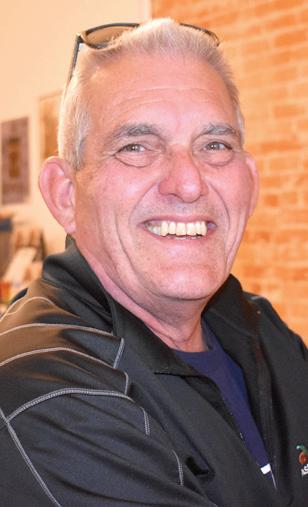
Mashed potatoes, any style or form, because they go so well with the turkey.

LESA FUENTES NAPPANEE
Corn casserole and pumpkin pie! Everyone likes it! It’s delicious!

and cornstarch. It’s delicious.


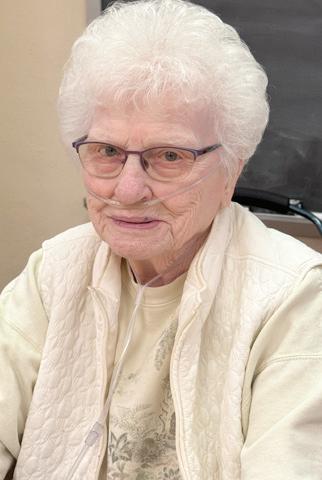

The Papers Incorporated, 206 S. Main St., P.O. Box 188, Milford, IN 46542. STAFF
Ron Baumgartner, Publisher rbaumgartner@the-papers.com
Annette Weaver, Business Manager aweaver@the-papers.com
Kristin DeVittorio, Director Of Marketing kdevittorio@the-papers.com
Deb Patterson, Editor-In-Chief dpatterson@the-papers.com
Publication Manager/Account Executive
Marla Schroeder mschroeder@the-papers.com • 574-350-4488
Lauren Zeugner, Editor lzeugner@the-papers.com
Jerry Long, Circulation Manager jlong@the-papers.com
Elkhart/Kosciusko Edition
Joseph
EDITORIAL DEADLINES
SUBSCRIPTIONS
Mailed subscriptions are available, prepaid with order at $37 for one year; and $64 for two years. (Select one edition.) Your cancelled check will serve as your receipt. To order a subscription, call 574-658-4111.
ADVERTISING
For advertising deadlines call your sales representative. The existence of advertising in Senior Life is not meant as an endorsement of any product, services or individuals by anyone except the advertisers. Signed letters or columns are the opinion of the writers, and not necessarily the opinion of the publishers. To advertise contact Marla Schroeder at 574-350-4488 or mschroeder@the-papers.com.
PRODUCTION
Senior Life is digitally composed on Macintosh Computers using Digital Technology’s Newspaper Publishing Suite software and Photoshop software. Submit ads as .tif, .eps or .pdf files. ASCII (generic text) may be submitted via email or on CD/DVD. Check
Pumpkin
DAN BROWN MILFORD
I like oyster dressing, because my father’s mother always made oyster dressing for my dad, and I developed a taste for it, too. That, and you only get it at Thanksgiving.

KAT ERNSBERGER NAPPANEE
Butterhorns! We always had them handmade every year. Many times it was a family project to make enough for leftovers.




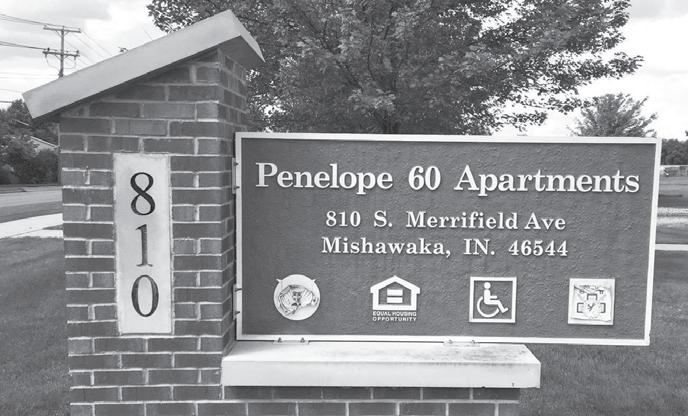


Rice & Rice Attorneys joined others in the Walk to End Alzheimer’s on Oct. 6 to support all those affected by Alzheimer’s and other dementia.
More than 7 million Americans are living with Alzheimer’s, including 121,300 in Indiana. An additional 11 million, including 216,000 in Indiana, are providing unpaid care — a physically, emotionally and financially challenging role.
Alzheimer’s is among the most expensive diseases in America and will cost our nation an estimated $360 billion this year. The impact on the workforce is staggering. Six in 10 caregivers were employed in the past year, and 57% of employed caregivers had to go in to work late, leave early, or take time off due to caregiving demands.
The Alzheimer’s Association Walk to End Alzheimer’s is held annually, in more than 600 communities nationwide, and is the world’s largest event to raise awareness and funds for Alzheimer’s care, support and research. Since 1989, the Alzheimer’s Association mobilized millions of Americans in the Alzheimer’s Association Memory Walk; now the Alzheimer’s Association is continuing to lead the way with Walk to End Alzheimer’s.
“Alzheimer’s has a dramatic impact on families in our community and around the country,” said Donna Rice, partner at Rice & Rice Attorneys.
“The Alzheimer’s Association provides care and support to all those impacted by the disease while also advancing critical research toward methods of treatment and prevention and, ultimately, a cure. This is why we are proud to support the Alzheimer’s Association Walk to End Alzheimer’s.
“Our fundraising efforts continue for this important cause. Would you join us in the fight to end Alzheimer’s? We can’t do it without you!”
Together, we can advance Alzheimer’s care, support and research on behalf of the more than 7 million Americans living with this disease.

The Alzheimer’s Association is a worldwide voluntary health organization dedicated to Alzheimer’s care, support and research. Its mission is to lead the way to end Alzheimer’s and all other dementia — by accelerating global research, driving risk reduction and early detection, and maximizing quality care and support. Visit alz.org or call (800) 272-3900.
To learn more about how Rice & Rice Attorneys helps families affected by this disease, through careful Elder Law planning, call (800) 303-7423 to schedule a free, no-obligation consultation or to attend one of our Estate Planning/Medicaid Planning workshops at:
Ruth’s Chris, Granger, Monday, Nov. 11, 6 p.m.; or Monday, Nov. 18th, 6 p.m.
Reservations required, seating is limited! Call now: (800) 303-7423 or visit www.riceandrice.com.
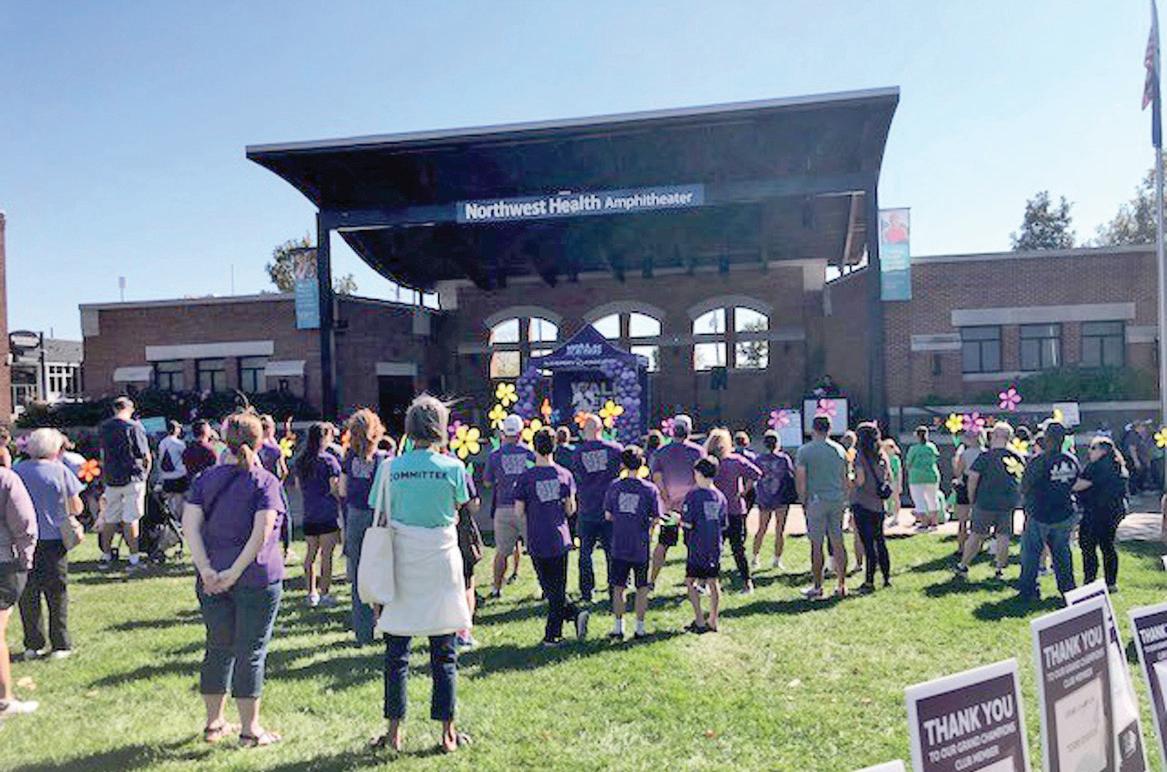
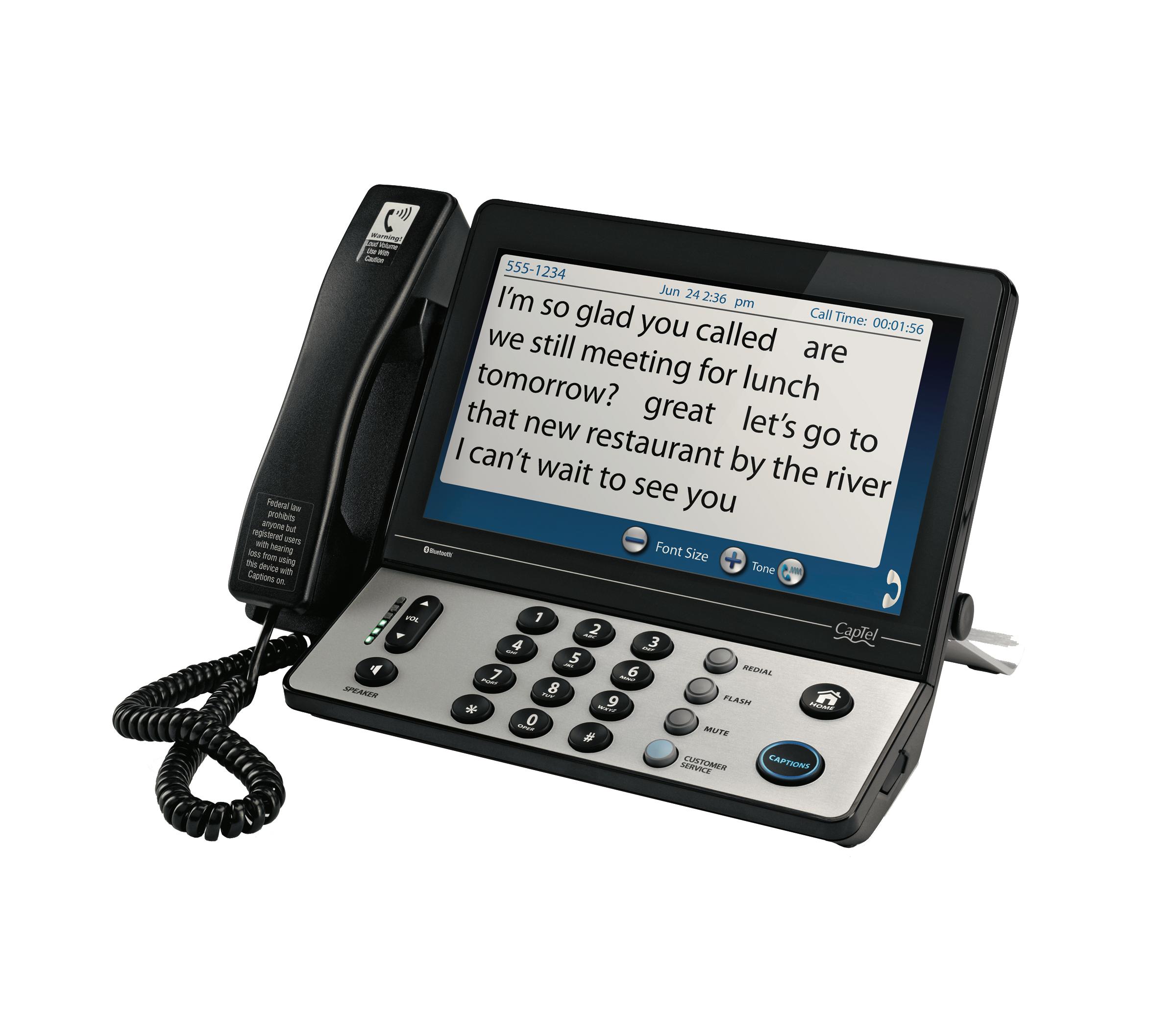

By LILLI DWYER Staff Writer
Born and raised in Goshen, George Buckmaster attended Goshen High School and completed his education in the military. He enlisted with the Air Force in 1962, at the age of 17.
“Back then we had the draft. I just wanted to be able to make the choice, what I was in,” he said.
At the end of basic training, Buckmaster’s aptitude test revealed he would work best in the electronics field, so he became a radio operator.
“I spent all my time on the ground with ground radio. We used the 14-foot parabolic disk, like the satellite dishes except way bigger. We actually bounced the signals off the troposphere back to the ground to the next station,” he recalled. Communications would be passed to him where he was stationed in Turkey and he would pass it on to Pakistan or “even further around the world.”
During his four-year military service, Buckmaster spent 18 months in Turkey and four in the Dominican Republic.
“Once I got in the military, I took a liking to traveling. Once I
got out and got married, the wife and I did as much traveling as we could,” he said.
Over the years, Buckmaster and his wife, Cheryl, traveled to Canada, Mexico, Puerto Rico,the Bahamas and 48 of the 50 United States. Hawaii was a favorite destination of theirs. Cheryl died in 2016, just before they celebrated 50 years of marriage.
The couple raised four children Buckmaster also has 13 grandchildren and nine great-grandchildren.
Buckmaster joined the American Legion in 1967 and the Veterans of Foreign Wars in 1970. In 2011, he became part of the Honor Guard, performing military honors for veterans’ funerals. The Honor Guard, he noted, is mainly older veterans.
“We’ve got a basic group of about 12 that are able to do funerals on a steady basis. The problem we run into is trying to get any of the younger guys that were in Iraq and Afghanistan. They’re still working full-time and raising families, and when we have funerals, it’s not just on weekends,” he explained.
The Honor Guard is often called away from home, including as far as Michigan on one occasion.

for
“We had a woman who contacted our group, wanted to know if we could do military honors for her husband. They had lived in Indiana, but he was buried in Michigan, and Michigan wasn’t going to do it. ... By the time we were done doing our part of it, she was crying. She actually came around and shook each of our
hands said thank you for doing it,” he recalled. “It’s an honor to honor the veterans. I look at it, if we didn’t have our veterans, we wouldn’t have the freedoms we’ve got.”
Buckmaster has served as the commander of VFW Post 985 in Goshen for the past five years. He also helps out with two meals at the post every month.
He emphasized the importance of keeping families involved in post happenings to make the VFW a social space, with things like their Halloween and Christmas parties.
“We try to involve the whole family with activities, not just a bunch of guys drinking beer and talking war stories,” he said with a laugh.
“Dick, I know that the snoring is not intentional. But it has some devastating effects on our health and well-being. What are we going to do about it?”
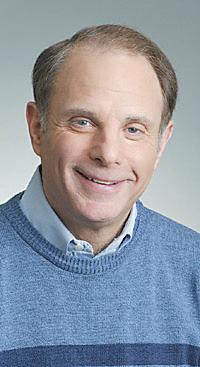
By DICK WOLFSIE
“I’ve tried everything. It must have to do with the sleeping position.”
“Well, that’s tough to control. But we have to do something.”
“I’ll call the vet first thing in the morning.”
Yes, we have a pet that snores.
But it’s not a dog. Believe it or not, we have a cat that snores. Yes, seriously, a cat. Her name is Angel.
We have had two dogs over the years that snored. Both Barney and my second beagle, Toby, were snorers. It wasn’t the occasional snort that kept us awake; it was a full blown, get-out-of-my-way foghorn. Both dogs woke themselves up every night, which made them cranky the next day. Dogs need their 18 hours.
I specifically remember the first onset of Toby’s snoring. Knee surgery had slowed him down a bit, resulting in a modest weight gain, a factor in snoring. I had observed no increase in smoking or alcohol consumption in the hound, another common cause.


I Googled pets and snoring. Apparently, there’s a real epidemic of sleep disorders in the canine world: narcolepsy, jet lag, insomnia, night terrors and restless paw syndrome.
But cats?
The first thing I learned was those animals with short, flat faces — like bulldogs, pugs, Pekingese — are more apt to snore. If your human partner has a short, flat face you just better accept it or trade your significant other for a horse.
The site also noted that when pets sleep on their backs, snoring is more apt to occur.
The best solution is to roust them out of a deep sleep, then abruptly flip them over on their stomachs. Mary Ellen thought
this sounded like a good idea because that method worked temporarily on me several years ago.
But I still snore. Just like the cat.
One pet owner suggested gluing a tennis ball on a leather belt and wrapping it around the cat’s torso, so the bulge on his back would prevent him from rolling over. I tried this with Toby and Barney years ago. Both were pretty adept at twisting themselves into a knot, snatching the ball from the strap, and then dropping it on my head at two in the morning so we could play fetch.
I got back on Google. I saw that one woman recommended nasal strips for a pet that
Presented by: Patricia Piechocki, Alzheimer’s and Dementia Services of Northern Indiana
snores, but sticking one of those on a beagle’s nose is like trying to keep a bandage on a peeled banana. Another idea was giving your pet a nice foam cushion to prop his head up at night, thus opening the nasal airway. Angel had no interest in this. But both beagles loved the pillows. Every bite of them.
Mary Ellen finally Googled the cat snoring issue. It said there wasn’t much you could do to stop a cat from snoring. A vet on the site suggested having the cat sleep in the basement, but my wife quickly rejected that solution. But that did give her another thought. Now she’s calling my doctor to see if he would advise her to do the same thing with me.


By TOM MORROW Mature Life Features
With harvest time just over in our nation, it’s a good time to remind everyone that John Deere and Cyrus McCormick were primarily responsible for plowing the soil and harvesting food for America and, eventually, the world.
These two men were the primary providers of revolutionary farming tools that formed the “Breadbasket of the World.”
Deere, born Feb. 7, 1804, was an American blacksmith who founded Deere & Co., which has labels on mowers, tractors and a variety of farm equipment. McCormick, born five years after Deere, on Feb. 15, 1809, in Virginia, ended up being the father of manufacturing giant International-Harvester. They became two of the world’s leading agricultural and construction equipment inventors, developers and manufacturers.
In 1837, Deere moved to Illinois, where he invented, designed and manufactured the first commercially successful steel plow. About that same time, McCormick settled in Illinois, where he further developed his reaping machine.
Deere worked in Vermont
By JIM CARPENTER Guest Writer
There’s a lot of things I no longer do.
Some I won’t, a lot I shouldn’t.
And of course, the physical stuff.
Anymore I simply couldn’t.
But it seems I can do steps.
And quite a few at that.
My former competitive nature, has made a ‘walking’ comeback.
Moving in with a daughter, their basement became our home.
We actually had a lot of upgrades, including a brand new phone.
I can hardly use the technology. It just seems a bit complex.

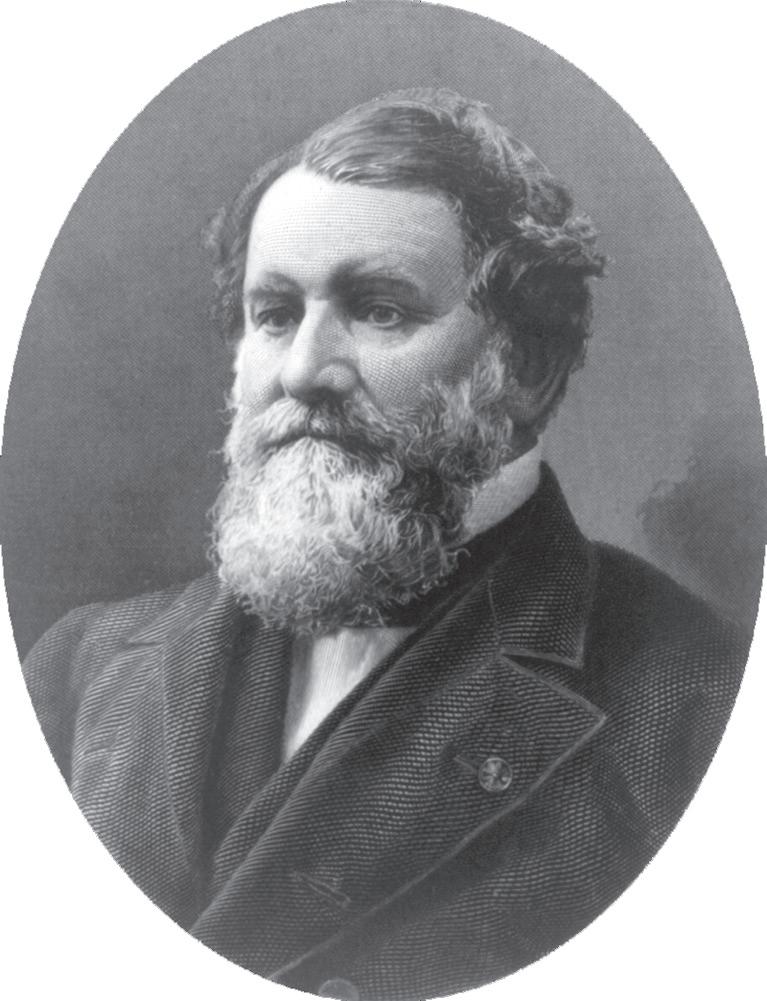
before settling in Illinois. He found that cast-iron plows of that day were not working very well in cutting through the tough prairie soil. Deere came to the conclusion a plow made out of highly polished steel and a correctly shaped moldboard better handled the soil conditions of the vast prairie, especially its sticky clay. It allowed farmers to double and triple their crop production with relative ease.
Like Deere, McCormick ended up being an Illinois industrialist and inventor who went on to develop a variety of harvesting tools.
In 1831, using the working model developed by his father and the research done by others, McCormick set about developing his mechanical reaper. He built, tested and
“We want to
However, one feature was quickly mastered.
I became adept at counting steps.
There suddenly came a purpose, for the expanse of kitchen floor.
You’ll find me up there walking laps, on nearly every morning.
The day is slowly dawning,
As I am getting in those reps. Before this house awakes,
I’ll have 4,000 steps.
I have been wanting to write a poem on steps for awhile now.
Once again, the “in the moment” comes through for me.
demonstrated it within a span of 18 months. Sales were slow for the first few years because of the farmers’ skepticism against mechanical machinery. His mechanical reaper for harvesting grain relieved farmers from vast amounts of hand labor, quadrupling their production. McCormick sold only a few for the first years, but he kept on improving his invention. In 1834, he received a patent for the reaper design. He had to overcome the farmers’ suspicion of mechanical equipment. As his machine’s reputation among farmers became better known, orders picked up.
In 1837, Deere developed and manufactured the first commercially successful cast steel plow. The wrought iron framed plow had a polished
steel blade. It was ideal for turning the tough Midwestern soil, far surpassing other plows of the day. By early 1838, Deere’s steel plow had farmers passing the word about its labor-saving success. By 1841, Deere was manufacturing 75 to 100 plows a year.
The two revolutionary inventors ended up moving their respective operations to Illinois, the heart of America’s farmland.
Deere moved to Moline, because it was a key transportation hub on the Mississippi River. By 1855, Deere had sold more than 10,000 plows. The tool became known as “The Plow that Broke the Plains.”
McCormick moved to Chicago and his factory was destroyed in the Chicago Fire of 1871. He quickly rebuilt



another with increased capacity and eventually expanded equipment sales to Europe. By 1857, McCormick was turning out 23,000 reapers a year. He bought other agricultural patents and companies, expanding his empire to sell mowers, harvesters, and other farming implements around the world.
Later in life, Deere became active in civil and political affairs. He served as president of the National Bank of Moline, a director of the Moline Free Public Library, a trustee of the First Congregational Church, and as mayor of Moline for two years.
He died at home on May 17, 1886, at the age of 82. McCormick died May 13, 1884, at the age of 75.
Mature Life Features Copyright 2024





By CECIL SCAGLIONE
Mature Life Features
The gifting season is packaged around the Thanksgiving-to-Christmas period, but the spirit of giving wraps itself around the whole year.
It’s been reported that more than half of the population donated just under $375 billion to one or more charities in this country in 2023.
Yet many donors don’t adequately screen the organizations they support.
They should make their charitable choices as carefully
as other personal and finan cial decisions so they’ll get the best bang for their buck. In other words, so the money they donate will be put to the best use and not swallowed by the organization’s administrators.
It’s also the giver’s responsi bility to learn how their gifts and bequests will best benefit everyone — the donors, their heirs, the nonprofit community, and those who benefit from the non-profits’ activities. This takes care and planning that many are unwilling to make.
It’s up to you, before fashion ing any donation or legacy, to
Provided by Indiana Farm Bureau
Long-term care is a critical aspect of financial planning that often gets overlooked until it’s too late. As we age, the possibility of needing assistance with daily activities such as bathing, dressing, toileting, continence, transferring and eating becomes increasingly likely. Planning for long-term care ensures that we can maintain our independence and quality of life even as we face health challenges in our later years.
What Is Included In Long-Term Care?
Long-term care encompasses a range of services designed to meet the medical and non-medical needs of individuals who are unable to perform basic activities of daily living without assistance. These services can be provided in various settings, including:
1. Nursing homes: Facilities that provide 24-hour skilled nursing care for individuals with complex medical needs.

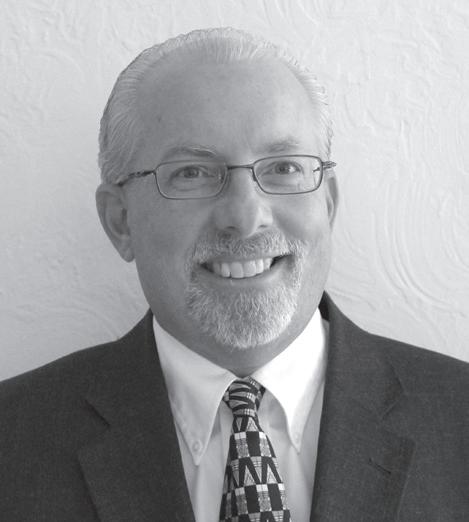
almost every flood, fire, hurricane or earthquake, imposters bombard cyberspace and telephones with requests for aid and assistance for victims of
If you wish, you can discuss with your tax preparer and attorney how to establish charitable bequests, coordinate charity with lifetime gifts to family members, and keep records to satisfy tax-code requirements as well as structuring charitable life annuities, pooled life income funds, and private
2. Assisted living facilities: Residential communities that help with activities of daily living while still promoting indepen dence.
3. Home care: Services provid ed in the comfort of one’s own home, including assistance with personal care, meal preparation, and medication management. Home care might also include living with surviving children who have time and resources to assist.
Pros And Cons Of Purchasing Insurance
Purchasing long-term care insurance is one way to prepare for the potential costs associated with these services. Here are some pros and cons to consider:
In
term care insurance can help cov er the high costs of care, protect ing your savings and assets.
insurance gives you the flexibili ty to choose the type of care you receive and where and how you receive it.
that you have a plan in place for long-term care can provide peace of mind for both you and your loved ones.







consideration and preparation. Whether through
or other means, it’s crucial to have a plan in place to ensure that you receive the care you need while protecting your financial security. Start planning today to safeguard your future and enjoy peace of mind knowing that you are prepared for whatever lies ahead.


• How we expedite the processing of Social Security disability claims for service members.
• Answers to questions asked
Some active-duty military service members are unable to work due to a disabling condition but continue to receive pay while in a hospital or on medical leave. They should consider applying for SSDI. Active-duty status and receipt of military pay doesn’t necessarily prevent payment of
Our Military and Veterans webpage is easy to share on social media and with your friends and family. Consider passing this information along to someone
Hubbard Hill’s Living Wisdom Community will host a dementia caregiver forum, “Tips for Surviving the Holidays While Caring for a Loved One with Dementia.”
The forum, open to dementia caregivers across the region, will feature ways to navigate, understand, connect, and most importantly enjoy the holidays with loved ones on the journey of dementia. The forum. scheduled from 6-8 p.m. Tuesday, Nov. 19, will feature dementia care expert and Executive Director of Dementia Care Services for Hubbard Hill, Debbie Carriveau. She has been a dementia practitioner for more than 40 years, honing her knowledge, experience and raising the bar of dementia care across the state.
“For families coping with a loved one who is living with dementia, the holidays can be bittersweet times filled with families and friends, as well as stress and frustrations.
Festivities can agitate, confuse, and overstimulate these loved ones,” Carriveau said.
“It is critically important for families to consider in advance the impact holidays might have, both socially and emotionally, on everyone involved. Trying to make these celebrations easy for yourself and your loved one living with dementia is what surviving this time is all about. Our goal with this forum is to provide a break and share a few ‘how to’ tips to help both family and professional caregivers to better plan and cope with the upcoming holiday season, no matter your current environment. We are focused on sharing how to create holiday moments of joy,” she continued.
For more specifics and to register for Hubbard’s upcoming Caregiver Forum on Nov. 19, visit www.hubbardhill.org. This is a free event, but you must register as seating is limited.
By RYAN HAHN Trust Administrator Wealth Management Center
Creating a trust is an important part of estate planning. A trust offers several advantages, including the ability for you to maintain control over your assets, ensure they are distributed according to your preferences and provide potential tax advantages. With the assistance of the right estate planning attorney, you can craft a customized trust that fits your needs.
An irrevocable trust is a type of trust that is set up during the lifetime of the grantor. Unlike a revocable living trust that can be amended or revoked at any time, once an ILT is established, it cannot be amended or revoked. This type of trust is often used for estate planning purposes because once assets are placed into the trust, they cannot be taken out. An ILT can safeguard your assets and protect them from various liabilities that may threaten your financial security.
These types of trusts offer ultimate protection and security for yourself, your family, and your beneficiaries. Contact me to learn more about different types of trusts. Disclosure
This information is not designed, meant, nor does it constitute the rendering of legal or tax advice. You should consult with your attorney
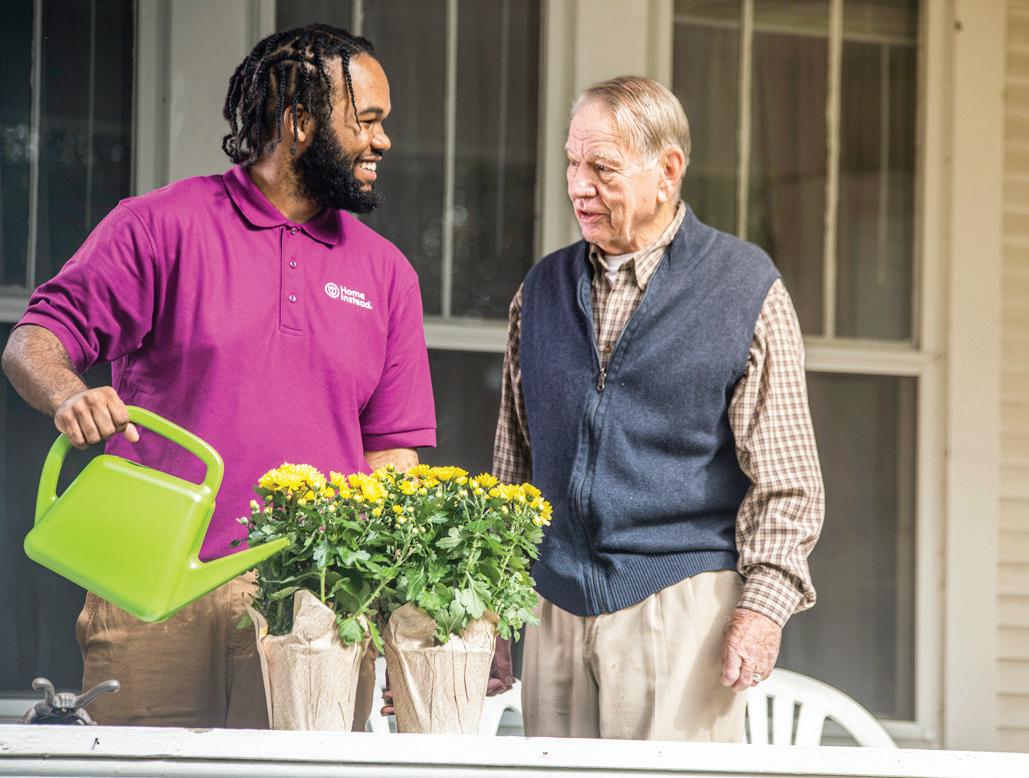
and/or tax advisor before implementing any strategy discussed here. Trust services provided by MEMBERS Trust Company are not federally insured, are not obligations of or guaranteed by the credit union or any affiliated entity, involve investment risks, including the possible loss of principle. MEMBERS Trust Company is a federal thrift regulated by the office of the comptroller or the currency.
Introducing The Francis House: A transformative new option for senior care. Finding the right living environment for yourself or a loved one is one of the most important decisions you can make. That’s why The Francis House, a new senior living home operated by the trusted team at Home Instead, is excited to open its doors and offer a unique and personalized care experience to seniors in our community.
Located in a serene, residential setting, The Francis House provides a home-like atmosphere where residents can enjoy a peaceful, supportive environment while receiving the care they need. Eric and Angela Thomas, who have over 30 years of experience in senior care, have created a
space that focuses on building meaningful relationships, fostering independence and enriching the lives of every resident.
What makes The Francis House special?
Personalized Care — At The Francis House, every resident is treated like family. The home is staffed with compassionate caregivers from Home Instead, a trusted name in senior care. This experienced team provides individualized attention and support, ensuring each resident’s unique needs are met.
A Home-Like Atmosphere — Unlike large facilities, The Francis House offers a smaller, more intimate setting. This allows residents to feel comfortable and cared for in a space that truly feels like home.
Accessible Care — The Francis House is a licensed waiver home and proudly accepts AFC benefits, as well as private pay and long-term care insurance, making it easier for families to access the care their loved ones need. For seniors looking to maintain independence while receiving the care they deserve, The Francis House is an ideal solution. With its compassionate team and beautiful environment, it’s more than just a place to live — it’s a place to thrive.
If you’re interested in learning more or scheduling a tour of The Francis House, contact us at (574) 256-1479 or email e.wilson@homeinstead. com. Let us help you find the perfect care solution for you or your loved one.


By NATHAN PACE Staff Writer
Health and wellness is not just important for Stephanie Morris, it’s been her livelihood in the Michiana area for the past 30 years. During that time she has made an impact on people across the country.
Morris teaches yoga and other wellness courses and has used social media to build connections with people.
“I’ve had online clients from everywhere,” Morris said. “Definitely Elkhart area and Concord. With social media I’ve had people as far as Alaska, Arizona and Florida.”
Morris and her husband, Jim, both worked in Elkhart starting in 1997. That’s when Morris taught classes at the YMCA of Elkhart County. After eight years, Morris switched to teaching yoga classes.
“I think I got into yoga about 20 years ago. I’m a pretty intense workout person,” Morris said. “High impact running, high impact aerobics. I knew I needed it. I didn’t really want to slow down and do yoga. I had never even taken a yoga class but I knew I needed it, so I went out and got certified and starting teaching it.”

Most of her clients through the yoga class are retirees, but she says she has younger participants, too. Morris taught yoga mainly at the Knollwood Country Club in Granger. Its not a coincidence many golfers have credited her for restoring their golf game.
“We work on balance. We work on core strength, too,” Morris said. “I’ve worked with people who play golf and say ‘Yes, this has really helped my golf game.’”
In addition to teaching fitness, Morris is also a health coach. Recently she began working as a care consultant for Firefly Home Care and
Home Health. She hopes her new role will help her continue to make meaningful relationships through her job.
“I’m in it to make meaningful connections. That’s been a part of everything that I’ve done. Whether I’m working with clients in my class or in the networking that I do, I value making those connections,” Morris said.
Morris grew up in Ohio and says her passion for health and wellness began by playing sports.
“It probably stems from sports. Playing sports and just having that desire to keep up with health and wellness. As
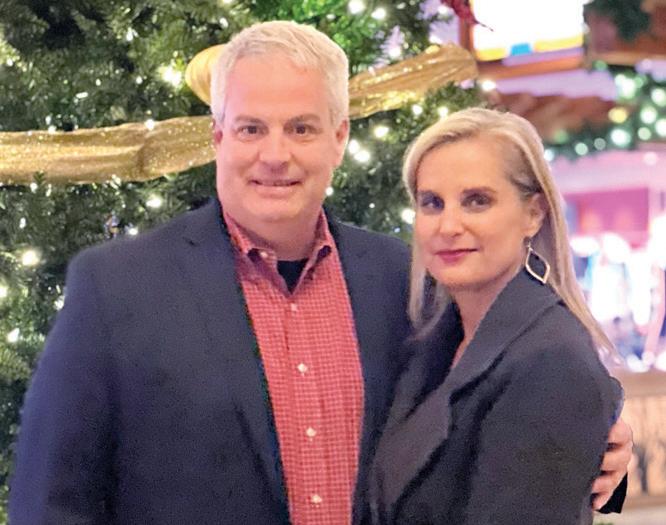
a major in college I decided to switch to healthcare administration. I realized there was a need, especially with seniors,” Morris said.
She and her husband have four children. One daughter, Caroline, plays basketball at Bethel University. Another has down syndrome but is still active as a cheerleader at Marian High School in Mishawaka.
Tips Morris has for those seeking to improve their health include strength training twice
a week, walk with a weighted vest to help with bone density and move your body regularly.
The main objective Morris emphasizes is muscle mass.
“The muscle mass on your body is directly correlated to how long you live,” Morris said.
“Knowing we lose three to five percent of our muscle mass every decade from the time that we turn 30, it’s really important that we do everything that we can to preserve as much as that muscle mass as possible.”
Q. What is an irrevocable trust?
A. Creating a trust is an important part of estate planning. A trust offers several advantages, including the ability for you to maintain control over your assets, ensure they are distributed according to your preferences, and provide potential tax advantages. With the assistance of the right estate planning attorney, you can craft a customized trust that fits your needs.
An Irrevocable Trust (ILT) is a type of trust that is set up during the lifetime of the grantor. Unlike a revocable living trust that can be amended or revoked at any time, once an ILT is established, it cannot be amended or revoked. This type of trust is often used for estate planning purposes because once assets are placed into the trust, they cannot be taken out. An ILT can safeguard your assets and

Ryan Hahn Trust Administrator
and your
ries. Contact me to learn more about different types of trusts.

A. As life becomes increasingly digitized, it is more important than ever to consider digital assets when planning your estate and drafting your estate planning documents. A personal representative can be assigned to close or memorialize the deceased’s online accounts—from email, online shopping and banking to social media and subscription services like Netflix or Amazon Prime. Accounts that remain active after death may be vulnerable to identity theft.
Personal, financial, and legal documents stored digitally are important to incorporate into your overall estate plan as well to prevent potential stress for your heirs. Making sure that family members and your personal representative are aware of what accounts you have and how to access those accounts is an important step to ensuring something

is not missed. Finally, a plan to preserve or pass down cherished digital photos and videos reduces the risk of losing access to them and provides peace of mind for you and your family.
You should consult your elder law attorney to ensure that your online presence and digital legacies are managed according to your wishes.

Billy Swan
Billy Swan always maintained that his best songs have come easily and fast.

By RANDAL C. HILL
Case in point: In 1962, at age 20, Swan struck recording gold when a poem he wrote in a high school English class years before morphed into the lyrics of a hastily composed ditty he called “Lover Please.” It became the last Top 10 hit for rhythm-and-blues legend Clyde McPhatter.
One dozen years later, Swan entered Tennessee record producer Chip Young’s Young’un Sound Studio and, in two takes, recorded a chart-topping tune that had taken him 20 minutes to write.
Music critics pronounced “I Can Help” a neo-rockabilly shuffle, fueled by an irresistible electric organ line; Swan, though, saw it as an up-tempo blues song. Either way, it became a smash on both sides of the Atlantic.
Born in Missouri, Swan grew
up influenced by country artists and such rock ‘n’ roll pioneers as Elvis Presley and Buddy Holly. By age 14, Swan was drumming in local beer joints, while also teaching himself to play rhythm guitar and keyboards. He eventually moved to Memphis, where he wrote several songs for established country artists and, in time, cut his record-production teeth on Tony Joe White’s classic ditty “Polk Salad Annie.”
Billy signed to record for Nashville’s Monument Records.
He composed “I Can Help” in the “music room” that his wife, Marlu, had converted from a closet inside the small duplex they shared. Those cramped quarters held an electric organ, an amplifier and a Rhythm Master drum machine.
“That Rhythm Master had something like 10 preset sounds,” recalls Swan. “It had mambo, cha-cha, bossa nova, Rock 1 and Rock 2. I used one of those rock settings when I wrote ‘I Can Help.’ ”
Young’un Sound was actually a two-room log house in Murfreesboro, Tenn., about 35 miles southeast of Nashville. To record his million-seller, Swan borrowed a portable organ from a session musician in the studio that day.
Swan explains, “Chip set up
a vocal mic. I stood in front of the organ, and what you hear was captured on the second take. While I was playing the organ and singing, I was also shaking my leg all through that take; Chip’s little puppy named Bowser was tugging on my pants leg all through what you hear on the record.”
Let’s examine “I Can Help.”
On the surface, a kind-hearted man is offering his services to a lady who may appreciate his assistance:
“I got two strong arms, I can help
“Apparently, nothing is too big a task for him:
“If your child needs a daddy, I can help.”
But the song’s refrain shows a change in focus, and Mister Nice Guy is obviously also interested in establishing a romantic relationship:
“When I go to sleep at night
“You’re always a part of my dream
“Holding me tight and telling me everything
“I want to hear.”
Yes, he’s willing to help, but he yearns for more.
You’ve explained yourself, Billy. Now all you can do is await her decision.
By CECIL SCAGLIONE
Mature Life Features
You don’t have to live alone to be lonely.
Senior citizens homes are crammed with lonely people. And there are hordes of people living alone who are not lonely. They enjoy the time they have to themselves and the freedom to do what they want to do, whenever they want to do it, and for as long as they like.
The starkness of lonely living ambushes many people after a loved one dies.
Walking into an empty house after all the arrangements have been made can be debilitating.
In some ways, residents of a senior living complex can help because many of them have been through what the grieving person is going through.
Instead of torrents of sympathy, the residents offer empathy and, in some cases, sage advice to help the bereaved breathe through the crisis.
There is a difference between missing a loved one and being lonely. Thinking about how great a person he or she was means you miss them. Remembering how and longing for sharing matters and moments with them indicates you’re lonely.
Everyone has or will experience loneliness at some time during their lives. Some folks, research has revealed, are born with loneliness in their genes.
Giving in to it can damage your life. It can deepen dementia
and depression, bring on physical disabilities, and shorten your life.
Regardless of the source of your loneliness, there are steps you can take to soften its edges.
Friends, pets, exercise, and travel tours are cited among the curbs against loneliness.
Keeping a journal reportedly helps divert loneliness. It allows you to get to know and like yourself and alleviates the stress of fighting off loneliness.
Interacting with other people helps — coffee sessions with friends, joining hobby groups and volunteering your time with an organization you support are a few ways.
It turns out caregivers can experience severe loneliness as their world shrinks down to the individuals they’re caring for. They’re atop the list of folks who need to find time to devote to something they enjoy to fend off loneliness. If you’re a caregiver, you should do something you like to do, even if you have to do it yourself.
Take a weekend to visit the grandkids, visit your favorite restaurant, buy a bicycle and pedal around the neighborhood and get to know your neighbors, slip in a warm soothing bath or learn to play the saxophone.
Mature Life Features Copyright 2024


“What’s in your Bag” will be offered from 3-4 p.m. Tuesday, Nov. 19, at the Warsaw Community Library located at 310 E. Main St., Warsaw. This free, educational program, by Purdue Extension — Kosciusko County will be presented by Shannon Shepherd, extension educator of health and human sciences.
Identity theft can happen to anyone, but there are some precautions you can take to reduce your risk. This interactive program will make you aware of how much personal information you carry with you every day, provide ways to help
prevent or decrease your risk of having your identity stolen, and teach you the steps to take if your identity has been stolen. If you would like to attend the program, pre-register by Tuesday, Nov. 12, 2024 by calling the Extension Office at (574) 372-2340 or emailing shephe52@purdue.edu. This program and all programs of the Purdue University Extension Service are open to everyone.
If you need a reasonable accommodation to participate in this program, contact Shepherd at (574) 372-2340 or shephe52@ purdue.edu.



Family caregivers are often the unsung heroes in many families. Caregivers provide an economic value of $470 billion, according to AARP. Without family caregivers, healthcare would be even more costly in the United States. While family caregivers should be celebrated every day, November is a month to recognize and honor caregivers, raise awareness around caregiving issues, educate communities, and work to increase support for our nation's caregivers. This month, especially, REAL Services acknowledges and honors families who are often caregiving "around the clock.” That means around-theclock dedication, organization, responsibility, scheduling, and hands-on care. Caregivers are often reluctant to ask for support, so here are some ways you can support the caregivers in your life:
1. Offer Specific Help
Caregivers often hear, “Let me know how I can help!” However, many caregivers don’t know where to start, as their to-do list seems endless. Offer specific help by providing a meal, offering to pick up groceries, driving their loved-one to an appointment, or simply just being with their loved one so they can take care of their own to-do list or find respite.
2. Listen
Sometimes, caregivers just need someone to listen to them, and they often feel unheard. Take the caregiver in your life for a cup of coffee, visit them at their home, or talk with them on the phone and just listen, and offer advice if asked.
3. Raise Awareness
Especially during November, you can take action to raise awareness of
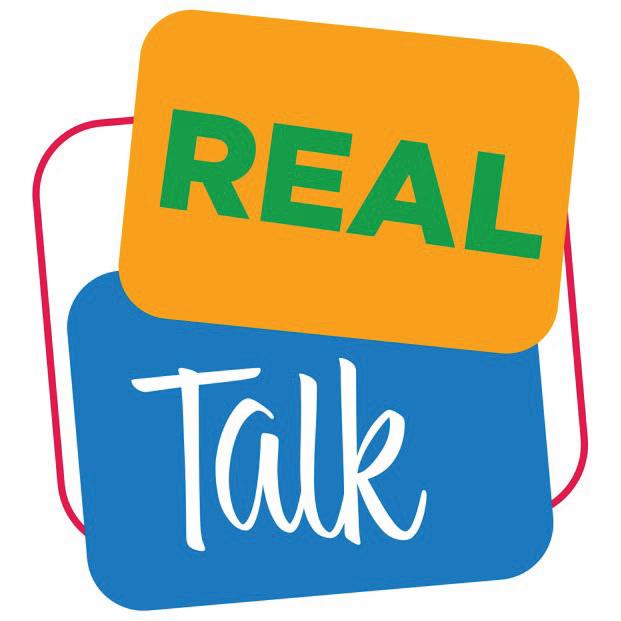
To help caregivers thrive, November’s REAL Talk events are all about caregivers! The topic, When Caring for A Loved One Leaves a Mark: Caregiver Stress, will be presented by the REAL Services ’ Alzheimer’s and Dementia Services team at the following locations:
November 12: 11:00 a.m.: YMCA 111 W. Jefferson Blvd. South Bend, IN 46601
November 21: 11:00 a.m.: OWLS Active Aging Center at Trinity 2715 E. Jackson Blvd. Elkhart, IN 46516
November 22: 11:30 a.m.: 1Roof Southeast Neighborhood Center; 405 E. Dubail Ave. South Bend, IN 46613
To learn more and to register, visit: https://realservices.org/get-involved/real-talk/ or call (574) 284-7189.
caregiver challenges. Visit the National Council on Aging’s website (www.ncoa.org) to find this year’s Family Caregivers Month campaign, #CaregivingAroundtheClock. Share images and stories to your social media pages about the importance of caregiving, and encourage other’s to take action.
4. Provide Helpful Resources
Caregivers often do not have the luxury of time to find resources on their own, especially when tending to their loved one’s healthcare and basic needs. Let the caregiver in your life know that there are resources to support them, such as the REAL Services’ Alzheimer’s and Dementia Services program. Alzheimer’s and Dementia Services of Northern Indiana supports individuals and families at all stages of their unique caregiving journey through family consultations, a tollfree helpline, memory screenings, support groups, and more. Visit www.alzni.org to learn more.
5. Encourage Relaxation
Caregivers rarely have time for their own respite and rest. Encourage the caregiver in your life to carve out small moments each day for themselves, even if it is just five to ten minutes to focus on their breath.
Caregiving comes with many rewards and challenges. Let’s use November as an opportunity to reflect on all of the selfless acts caregivers provide each day, around the clock.
Madelyn Martinec, Development Director REAL Services

Elves for Elders has returned to REAL Services this year! While the holidays are about spending time with family, friends and gift -giving, all too often, older adults right here in our community have no one to spend time with nor receive a gift during the holidays. The Elves for Elders program is here to change that!
REAL Services is requesting Visa or MasterCard gift cards in $50.00 increments to provide a gift to those in need this holiday season. We ask that all cards be in by December 1, 2024. To donate, you may call Volunteer Services at (574) 284-7138 or mail or drop off a donation to REAL Services 1151 South Michigan St. South Bend, IN 46601 Mondays Fridays from 8:00 a.m. 4:30 p.m. Please mark your envelope “Elves for Elders.”
We look forward to spreading holiday cheer with you!
*Note: All gift cards donated will be used solely for Elves for Elders. REAL Services will not solicit gift cards for any other purpose.


The REAL Services Energy Assistance Program (EAP) is here! Here is what you need to know to stay out of the dark this fall and winter. Applications are open! The program officially started on November 1, 2024. There is still time to apply. Households that qualify for EAP are protected from disconnection from December 1, 2024 March 15, 2025. The program ends on April 14, 2025. When applying, please read all application materials carefully.
EAP is income based, and you are not required to have a senior in your household to participate. Proof of income is required. The household monthly income limits are as follows:
One person: $2,686
Two people: $3,513
Four people: $ 5,166
You must provide your heat and electric bills. You do not have to have a disconnect notice to receive assistance. Payment will be made directly to the utility company, or to you if utilities are included in your rent. Note that payments are onetime payments, not monthly. There are several changes to the program this year. It is no longer necessary to submit ID and social security cards. If there if a credit limit of $250 or more on a utility account, the household does not quality fo r a benefit for that utility. To ensure all households who apply and quality can receive assistance, benefits are lower this year.
For more information and to obtain an application, visit our office at 1151 South Michigan St. South Bend, IN 46601, email eapapps@realservices.org, or call (574) 232 -6501.
Elkhart County
Elkhart:
Riverside Terrace 181 N. Elkhart Ave. (574) 320-5995
New Site:
Tolson Center 1320 Benham Ave. (574) 320-5863
Stratford Commons 2601 Oakland Ave. (574) 320-5996
Goshen: Greencroft, Manor II 1425 Greencroft Blvd. (574) 971-6016
Kosciusko County
Mentone: 101 W. Main Street (574)353-7555
North Webster: 301 N. Main Street Suite D (574)834-1193
Pierceton: 205 N. First Street (574)526-1060

Silver Lake: 108 N. Harrison Street (260)450-2416
Syracuse: 1013 N. Long Drive (574)457-2631
Warsaw: Warsaw Tigers 320 W. Main Street, Warsaw 574-267-0037
Warsaw Senior Activity Center 800 N. Park Ave. (574) 267-0026

By LAURIE LECHLITNER Staff Writer
“I joined the Church of the Brethren when I was in my 20s,” stated Brock Ostrom, Claypool. “When I was in my early 30s, I was voted in as a lifetime deacon. When you become a deacon in the C.O.B, you’re not asked beforehand. We believe that God chooses deacons. I really saw nothing special about myself. But I knew that if I depended on God’s help, I could do it. Looking back, I smile. I’ve been a deacon at Liberty Mills Church of the Brethren now for many years.”
Ostrom was raised in the Anglican Church in Canada. “I attended catechism class and was confirmed. I’ve always taken my walk with the Lord seriously.”
After Ostrom moved to the U.S., he attended a revival service in the Church of the Brethren. “I was about 23 or 24. About every fall we’d have one. I don’t remember exactly what the speaker said that moved me so much. But I went forward after one of those services and dedicated my life to Jesus Christ. That was at Liberty Mills C.O.B. I was baptized and became a member of that church.”
In 1985, he and his wife Gwendolyn were elected deacon and deaconess. “We were very surprised to receive this lifelong calling.”
Part of the deacon’s job is to pray with individuals and sometimes lead the congregation in prayer. “We assist with communion and our Last Supper foot washing ceremony. We visit the sick and homebound. We’re also assigned to help people who are having personal struggles or financial issues. Sometimes this requires counseling, always prayer, and some-
times monetary assistance.”
There are 10 couples serving as deacons at Liberty Mills. Ostrom is very social. “I really enjoy visiting and helping people. Being a deacon gives me the opportunity to serve the Lord and assist people who need help.”
He serves as a Sunday school teacher. “I’ve served in various capacities at Liberty Mills for over 50 years. I’ve seen generations of families at our church. My Sunday school class consisted of the college singles and young married couples. But they’ve stayed through the years, so I can’t group them by age or station anymore. We have some interesting discussions in our Bible studies.” Ostrom has also served on the church board and as chairman of the deacon board.
He loves his church, but he’s also very active in the community. “I’m a bus driver. One day a boy asked me why I hated him so much. I answered, ‘I don’t hate you. But I do hate the things you do.’ After that, we began to understand each other better.”
The Ostroms have a small 22.5 acre farm. “We raise beef cows and steers and sell freezer meat.” Gwendolyn is the township trustee and Brock appraises real estate.
“I enjoy the fact that Gwendolyn and I serve the church as deacon and deaconess together. We often have a lot of issues to discuss. And I think it’s less intimidating when we go on visitations as a couple.”
Ostrom believes that as a deacon he needs to have a sincere walk with Jesus Christ. “I need to walk the talk and talk the walk. John 3:16 continues to amaze me. God loved us so much that He sent His Son to die for our sins! There’s no greater love.”






By GREENCROFT HOMESTEAD
Celebrated every November, National Family Caregivers and Alzheimer’s Awareness month is a time to recognize and honor family caregivers and the growing importance of adult day services across our country. Adult day health services provide a win/win situation for both the caregiver and their family member.
Older adults with cognitive and/or physical challenges benefit from the company of peers, enriching activities and close attention from compassionate health professionals during the day, yet are able to return to the familiarity of their homes every evening. Meaningful social interaction can improve one’s mental and physical health and help to prevent or delay further cognitive decline.
At the same time, the family caregiver benefits by taking a break from the physical demands and stress of providing round-the-clock care. Taking time off is vital to a caregiver’s health and well-being and having time apart can help refresh and rejuvenate
the relationship.
Located on the campus of Greencroft Goshen, The Thelma A. Schrock Homestead has been offering adult day services for 30 years. The Homestead provides an intimate, homelike setting where members engage in a variety of activities including art, games, reminiscing, baking, music, Bible study, pet and intergenerational visits, and trips to local attractions. While The Homestead serves a small group of no more than 15 participants, it is attached to Greencroft’s HealthCare Center, which provides additional health services and amenities including a nutritious lunch, salon services, concerts, outpatient therapy, medication administration and transportation services.
Adult Day Services are on average a third of the cost of Home Care Services and offers financial assistance to those unable to pay the full amount if you qualify. Open 8 a.m. to 4 p.m. Monday through Friday; contact the Homestead at (574) 537-4181 or kerryann.sandsmark@greencroft.org for more information and to schedule a tour.
By CECIL SCAGLIONE
Mature Life Features
Mass marketing over the internet has made it possible for pretty well everybody to get a look at everything that’s being offered for sale.
Black-belt shoppers can scamper through cyberspace to track down exotic spices in the Orient, exquisite lingerie in Paris or the nearest lot with affordable autos.
True bargain hunters have made use of a tried and true method of saving money. They buy in bulk.
Their attention is not just focused on bulk packages of paper towels, toilet paper, soap and frozen foods or economy-sized containers of laundry detergent and mouthwash.
The canny pick up family-sized packages of seafood, chicken, beef and pork that normally
little slower doesn’t mean you have to give up earning an income.
If you enjoy a good walk in the outdoors, you can make a dollar or two by walking dogs.
Being a tutor has long been a source of funds for folks. You can coach newcomers in English or help students in such areas as language or writing. This might even lead to stints as a substitute teacher.
An interesting sideline is to model for artists.
Growing and booming businesses are the delivery and driving services. You might be your own entrepreneur and offer to deliver for your nearby convenience store or druggist who doesn’t have any connection with other such services. Or you might be able to offer it cheaper than the more popular franchised businesses and for
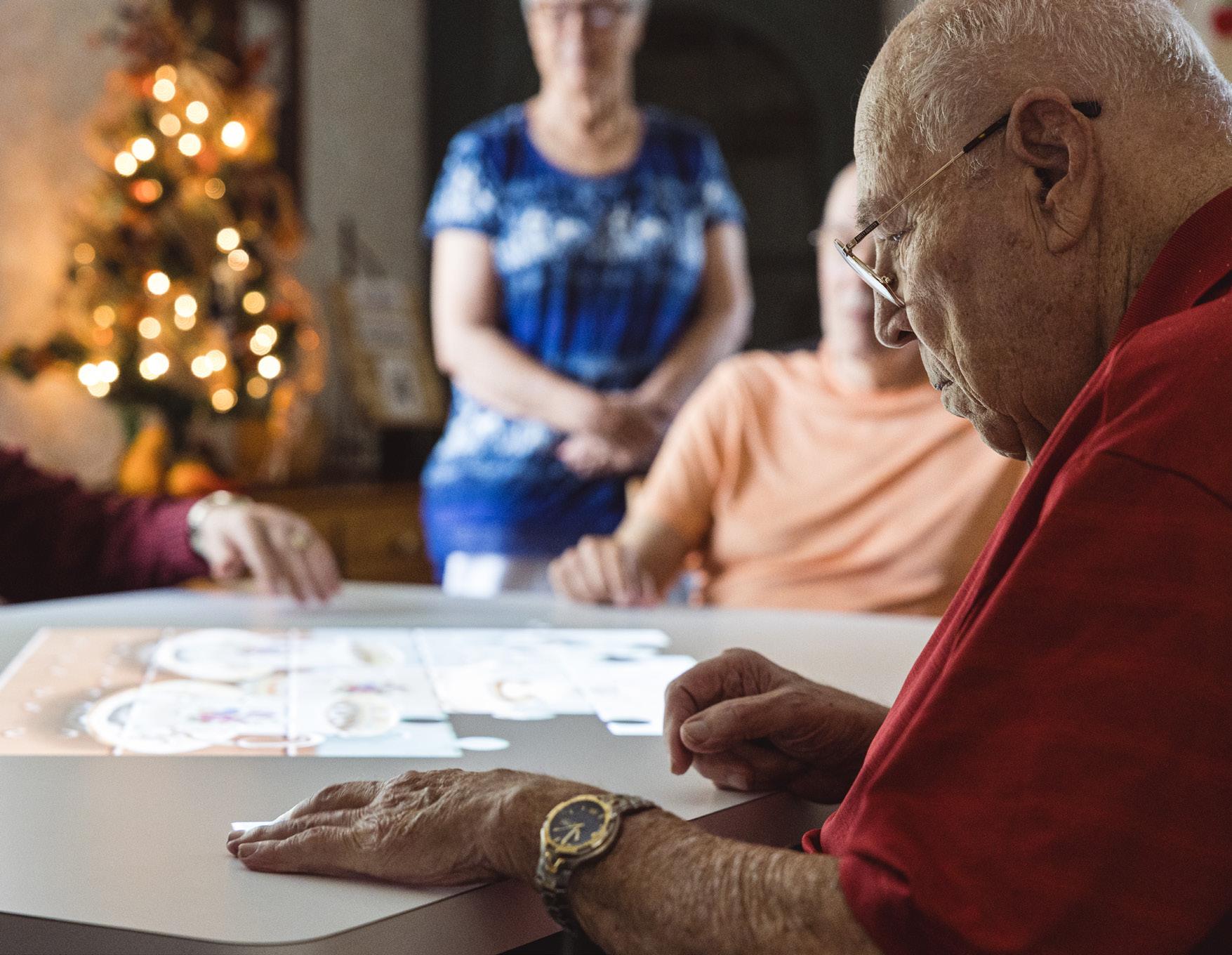

•
•









By CECIL SCAGLIONE
Mature Life Features
Discrimination of any sort is insidious and covered by an assortment of other excuses.
Ask left-handers what they had to put up with from teachers and students as they sweated and stuttered their way through school. Talk to short people about the jokes and jibes tossed their way by siblings and strangers.
Sit and listen to the insensi-
bilities suffered by anyone with a disability or disfigurement — a hare lip, a large prominent birthmark, a shrunken finger, anything. We haven’t even mentioned the color of one’s skin.
And think about being discriminated against because of your age. It can start well before you become a senior citizen.
The world has long been aware of the career challenge facing Hollywood actresses
when they no longer look like they’re in their sexy 20s and 30s.
As the nation’s population ages, the focus on ageism has become sharper.
There are rumbles about who will take care of the elderly, and what will be considered sufficient care.
A few of the oldest folks among us recall living on the farm and having the family responsibility of caring for both the property and parents
By CECIL SCAGLIONE
Mature Life Features
A dear friend who passed away recently after a lengthy illness took time to discuss with her spouse details to be attended to after her death.
They both agreed on the disposition of their remains and where they should be ensconced. Both felt at ease talking quietly and patiently about their plans as her death approached. After taking care of her wishes, the widower discussed and passed on these plans to their children to be followed when he dies.
Making after-death lists outlining how you wish to fade away from this world can be just as important as making a will and establish trusts to make sure your financial wishes are followed.
It can become critical when it deals with your final weeks, days and hours, especially if you lapse into a coma or any condition that makes it difficult to make on-the-spot decisions.
Doctors and medical staff are committed to keeping their charges functioning as long as there is any chance they will survive, when they feel the patient is not terminally ill.
You can draft these plans anytime. More than 30% of adults have formalized their end-of-life preferences in what is known as an advance directive — a legal document with instructions on how they feel they wish to end their lives. In most cases, the person wishes to avoid a lengthy pain-riddled existence leading to their death.
Problems arise if there is no healthcare proxy on hand to ensure that the patient’s directions are followed and/ or when the patient is unconscious and medics have to determine whether or not the patient is terminally ill.
To increase your chances of a peaceful death, you should discuss your plans and wishes with your family physician. If you feel he or she is unwilling to go along with your directive, you might seek another doctor.
In some cases, you might want to talk things over with a clergyman. And check the applicable laws in your state.
Review your plans over and over with members of your family — all of them, so there are no battles when your endof-life treatment and timing become critical. You might have one of them use their mobile phone camera to take
a video of you explaining your plans.
While you’re focusing on your wishes, you might want to explore thoroughly just what your condition is and what medications, therapies and treatments can delay or allay it.
When you and your doctor feel you’re no longer responding to treatments, you may call a local hospice-care service to prepare for your comfortable passing.
Mature Life Features Copyright 2024
handed down from father to son to grandson. With the move to cities, the trend turned to “warehousing” the elderly — finding a good institutional home to meet the needs of the aging.
The workplace also became less fertile ground to nourish the experience of long-time employees. To dodge the bullets of age discrimination charges and court actions, companies simply eliminated the jobs held by the younger (and lower paid) staffers who complained about uncreative barriers to promotions.
Take a look at who’s laid off or given furloughs or buyouts when corporations announce they’re downsizing for economic reason — the older workers.
Middle managers have always resisted having personnel on their teams who are more experienced than themselves.
Another issue is the dwindling workforce expected to fund government programs in place to care for the elderly, e.g, Social Security.
Forecasters expect senior citizens will outnumber children for the first time in the
early 2030s.
This adds weight to ageism — the diminishing younger population gets to resent the aging phalanx.
To meet the demand, multi-faceted senior living facilities are being built — country club-type complexes, independent living communities, assisted living centers and combinations of these.
More than 1 million of today’s 50 million seniors live in some such facility. That number is expected to double in the next decade.
Still, some 15 million individuals 65 and older live by themselves.
The medical support and health services for all these is not keeping up with the needs and demands.
The nation needs somewhere near 2.5 million additional healthcare workers, from physicians to lab technicians, in the next five years to take care of its aging population.
No one expects that to happen.
Mature Life Features Copyright 2024
By CECIL SCAGLIONE Mature Life Features
A neighbor well up in years bounces from furious to frustrated whenever he considers driving.
Family members keep casting hints and harpoons about his diminishing driving skills — loss of hearing, slow reaction time, eyesight not what it used to be, confusion in traffic, and on and on and on.
So he lets his children drive him wherever he has to go — mainly medical appointments, although they do get out for dinner now and then.
But he gets back at them, without their knowledge. They haven’t taken away his keys. When everyone’s away, he shuffles out to the garage, climbs in behind the wheel and takes the family flivver for a drive — around the block, around the parking lot of a neighboring mall and back into the garage. He hasn’t told his






family about these excursions but he’s made sure he’s told a few of his friends and neighbors.
He could point out to those siblings and children who criticize his driving that older drivers are involved in fewer collisions and traffic fatalities on average than 70-plus-yearold motorists just a few years ago.
One reason is safer cars. But the trend is important because the number of older drivers is growing as the population ages.
At the same time, thanks to lifestyles, diet and medical advances, today’s geriatric drivers are healthier and more fit than their predecessors a generation or two ago.
As long as you feel capable of driving and handling traffic situations, you should feel comfortable keeping your keys. Be aware at the same time that many forms of dementia, dizziness from sugar lows or simply

old age, narrowing eyesight and several other disabilities that can diminish your ability to drive can strike silently and quickly.
You can take stock of when it might be time to give up your car keys.
Ask yourself if you can still read traffic signs readily and if you get lost or confused, especially in heavy traffic. Make sure your bad back doesn’t stop you from looking around to see if all is clear when you want to change lanes.
Do family and friends still ride with you when you’re driving?
And do you still like to drive?
Giving up our car keys means giving up our independence to most of us. That doesn’t have to be true.
The money you save on car payments, insurance, fuel, maintenance, parking and tolls can pay for more than enough cab rides. You can still go where you want to go whenever you want to, and you don’t have to drive.















By BEVERLY RAHN SCAGLIONE
Mature Life Features
The “real California,” that land of myth and movies, does exist.
You’ll find it along the section of the California mission trail that connects Mission San Juan Bautista outside Salinas to the mission for which this city is named, mid-way between Los Angeles and San Francisco.
We started along the River Road that parallels the Salinas River and Highway 101 as far south as Mission Soledad. This quiet, out-of-theway mission was the 13th the Franciscan friars established in the chain that forms the spine of the Golden State. It sits on a site that was served by native-built redwood aqueducts from hot springs a few miles away on the flanks of the Coastal Range.
Within a couple of hours’ drive-time north of “Obispo” are several other missions — Carmel, Santa Cruz, San Juan Bautista, San Miguel and San Antonio. The last is the next one down the road from Soledad.
San Antonio, founded third after San Diego and Carmel, is on the Hunter Ligget Military Reservation, the only one on a military base. Besides providing settlement centers, the 21 California missions served as military complexes and were built roughly a day’s horse ride apart.
Its southern neighbor is San Miguel, which was established

in 1797. It’s the 16th mission to be strung along El Camino Real (The King’s Highway). Window panes were made of stretched sheepskin as a substitute for hard-to-get glass.
We next ducked into Paso Robles, one of the best kept secrets on this out-of-the-mainstream tourist trail. It anchors a rolling Tuscany-lookalike landscape that supports some 70 wineries.
Before taking the 30-minute drive to San Luis Obispo, we spent a couple of days in Paso Robles to soak in its restfulness and romance while stopping by several wineries for savory sampling. When we finally rolled up to Mission

It’s not polite to stare at people with a disability or discuss their sickness, we’ve been told by mothers over the years.
When someone shows up in a wheelchair after a serious accident or announces they have a deadly disease such as cancer or ALS, the tendency is for us to avoid discussing the matter.
First of all, the individual afflicted is fully aware of his or her problem and pain. If they wish to explain further, they will.
If not, such lame reactions as telling them they still look good or that they’re strong and will overcome are just that —lame. You don’t “overcome” the loss of a leg. You adjust and adapt to living without it.
Nor do you overcome ALS,
known more familiarly as Lou Gehrig’s disease. Until medical researchers find a cure, the disease is fatal.
A tried and true reaction to encountering anyone with a disability is to ask them if they need anything — any assistance — or if there’s anything they’d like to do that you can help them with.
Talking about old times will probably help both enjoy the visit.
But be ready to listen. It’s quite possible that the stricken individual will blurt out an explanation of what happened, how they feel, or an apology for making you feel uncomfortable. It’s your job to keep things comfortable by acting human and responding calmly and honestly.
Mature Life Features Copyright 2024
By CECIL SCAGLIONE
Mature Life Features
If you’d like to live a long and healthy live, visit your friendly dentist.
While oral health has long been acknowledged as a foundation of overall health, visits to the dentist reportedly drop significantly as one reaches their 80th birthday.
This slices years off your longevity, according to a Journal on

Aging study that reports seeing a dentist once or twice a year can cut your mortality risk from all causes and assure you of a few more years of healthy living.
While brushing your teeth twice a day is the acceptable norm to maintain a healthy mouth, you should also floss. According to the same journal report, flossing increases your health benefit by 30%.
Mature Life Features Copyright 2024
San Luis Obispo, we were welcomed by chants of Sunday Mass coming from the church as we strolled along the creek walk that proclaims the present and past of this historic town.
Mature Life Features Copyright 2024







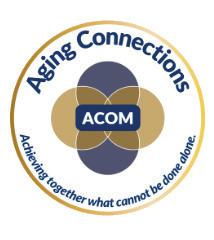
AGING CONNECTIONS
Serving Northern IN & Southwest MI
A free online directory for aging & wellness resources. Our members offer a wide variety of services and information for your specific needs. www.agingconnections.org
Hover over Chapters on the navigation bar, then select your area and click directory.
Aging Connections is a 501(c)(3) Nonprofit Organization

GREENLEAF LIVING CENTER
1201 E. Beardsley Ave. Elkhart, IN 46514 (574) 206-0086 www.greenleafhs.com
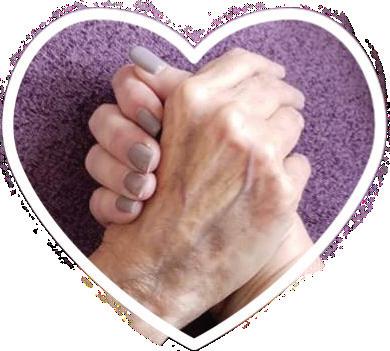
MY MOTHER’S HOUSE, LLC
55665 County Road 14 Bristol, IN 46507 (574) 202-7091
mymothershouse2022@gmail.com
We provide a compassionate environment where your loved one will be treated like family in our private care home.

NORTH WOODS VILLAGE AT EDISON LAKES 1409 E. Day Road Mishawaka, IN 46545 (574) 267-1866 www.northwoodsmemorycare.com

SIGNATURE HealthCARE OF BREMEN
316 Woodies Lane
Bremen, IN 46506
(574) 546-3494
SHCofBremen.com
liaison2.bremen@signaturehealthcarellc.com
Our Gated Community is a smaller, dedicated unit for comfort and safety for Alzheimer’s and Dementia Residents. We offer Enhanced Quality of Life Programming which includes cognitive strengths, life skills, daily movement, power of music, artistic expression, creativity and socialization.
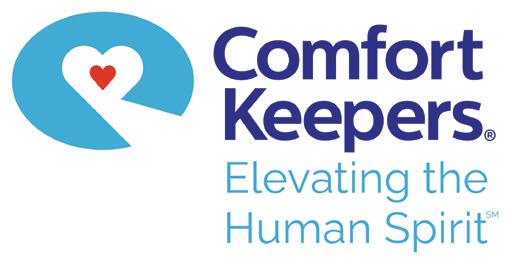
6910 N. Main St., Ste. 3, Unit 47 Granger, IN 46530 (574) 277-4121, (574) 327-6123
www.southbendin.comfortkeepers.com
Provides In-Home Care Services through our interactive caregiving approach, personal care, companionship and housekeeping, transportation, respite care, dementia care.


INSTEAD 1450 Magnolia Ave. Elkhart, IN 46514 (574) 875-7777
www.homeinstead.com/588
Serving Elkhart & Kosciusko counties and surrounding areas. From companionship to transportation to loving care, to us it’s personal.

2515 N. Bendix Dr., Ste. 201 South Bend, IN 46628 (574) 931-0712
villagecaregiving.com
NationsLargestPrivatelyOwnedAndOperatedHome CareAgency.VAProvider.WeAcceptAVarietyOf PaymentOptions.CallToday!
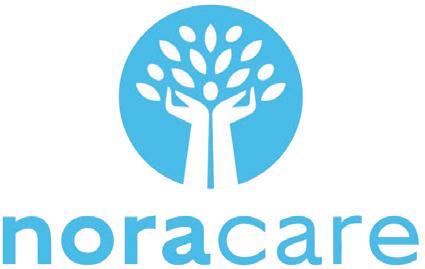
NORACARE
1251 N. Eddy Street, Suite 200 South Bend, IN 46617 (574) 222-5992
info@noracare.us
www.noracare.us
Access experienced health professionals to support your home healthcare needs at affordable rates. We accept long-term care insurance.

(574) 533-0626 GoshenHomeMedical.com
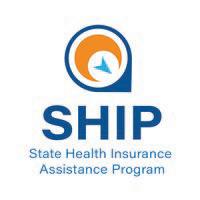
THE STATE HEALTH INSURANCE ASSISTANCE PROGRAM (SHIP) is a FREE health-benefits counseling and advocacy service for Medicare Beneficiaries and their families or caregivers. The mission is to educate, advocate FOR, counsel and empower people to make informed benefit decisions. Confused about your Medicare? Have questions about Medicaid? Visit your SHIP Counselor at Majestic Care of Goshen or call for an appointment 574-533-0351.

RELAY INDIANA - INTRAC 7702 Woodland Drive #130, Indianapolis, IN 46278 (877) 446-8722
Problems hearing on the telephone? We provide captioned telephones to assist you to read what the other person is saying. No more garbled or misunderstood conversations. Simply, READ what you’re hearing.

Brentwood at Elkhart Assisted Living

3109 E. Bristol Street, Elkhart, IN 46514 (574) 266-4508
https://brentwoodatelkhartassistedliving.com
Licensed Assisted Living, Physical & Occupational Therapy On-Site, Nurses 24 Hours Per Day, Private Apartments, Respite Care, Activities, Studio/1 BR/2 BR Apaartments, Pet Friendly.
Greencroft — Goshen

1225 Greencroft Blvd., Goshen, IN 46527-0819 (574) 537-4000 • www.greencroft.org
Assisted Living, Rehabilitation Unit, Skilled Licensed Nursing, Intermediate Care, Therapies: Speech-Occupational-Physical, Long Term Care, Private/Semi-Private Rooms, Pet Visitation Allowed, Medicare and/or Medicaid
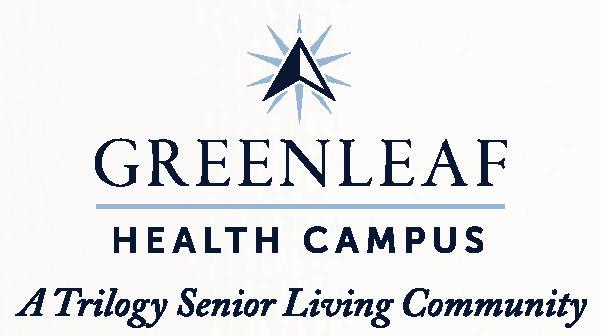
1201 East Beardsley Avenue, Elkhart, IN 46514
(574) 206-0086 • www.GreenleafHS.com
Assisted Living, Rehabilitation Unit, Alzheimer’s Unit, Skilled Licensed Nursing, Semi-Skilled Nursing or Intermediate Care, Therapies: SpeechOccupational-Respiratory-Physical, Long Term Care, Temporary Care, Private/Semi-Private Rooms, Pet Visitation Allowed, Pharmacy On Premises, Medicare and/or Medicaid
Hellenic Senior Living

2528 Bypass Road, Elkhart, IN 46514 (574) 389-1776
https://elkhart.ahepaseniorliving.org/
Licensed Assisted Living, Medicaid Waiver Accepted, 24 Hour Medical Care, Restaurant Style Dining, Therapy, Private Apartments, Daily Activities, Pet Friendly. Stop In To Tour Today!
Hubbard Hill Retirement Community

28070 CR 24 ., Elkhart, IN 46517 (574) 295-6260 • www.hubbardhill.org
Rehabilitation, Healthcare, Assisted Living, Memory Care, Maintenance Free Homes, Licensed, Locally Owned, Non-Profit, Faith Based, Physical, Occupational, Speech Therapies, Memory Care Support Group, Pet Friendly, There’s No Place Like Hubbard Hill
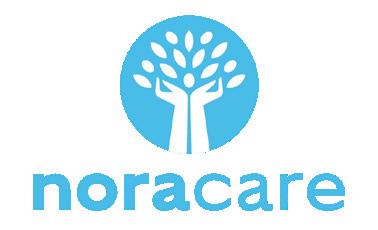
We
Care of Goshen

Goshen
2400 W. College Avenue, Goshen, IN 46526 (574) 533-0351
www.MajesticCare.com/Location/Goshen
Rehabilitation Unit, Skilled Licensed Nursing, Semi-Skilled Nursing or Intermediate Care, Therapies: Speech-Occupational-RespiratoryPhysical, Long Term Care, Temporary Care, Private/Semi-Private Rooms, Pet Visitation Allowed, Medicare and/or Medicaid
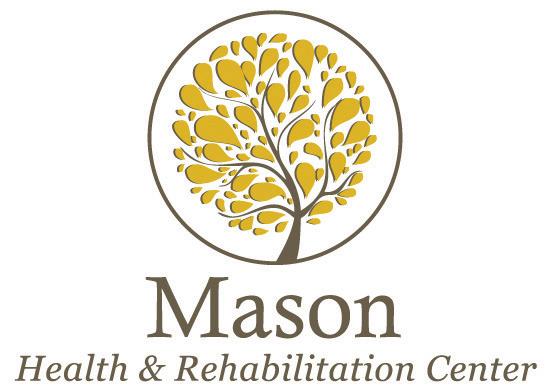
900 Provident Drive, Warsaw, IN 46580 (574) 371-2500 • www.masonhealthandrehab.com
Rehabilitation Unit, Skilled Licensed Nursing, Semi-Skilled Nursing or Intermediate Care, Therapies: Speech-Occupational-RespiratoryPhysical, Long Term Care, Temporary Care, Private/Semi-Private Rooms, Pet Visitation Allowed, Medicare and/or Medicaid

316 Woodies Lane, Bremen, IN 46506 (574) 546-3494 • SHCofBremen.com liaison2.bremen@signaturehealthcarellc.com
Our Gated Community is a smaller, dedicated unit for comfort and safety for Alzheimer’s and Dementia Residents. We offer Enhanced Quality of Life Programming which includes cognitive strengths, life
The Waters of Wakarusa-Assisted Living Facility
303 N. Washington Street, Wakarusa IN 46573 (574) 862-1918
admissions@watersofwakarusaALF.com
Independent/Assisted Living. Private studio/1bed/2bed apartments. Home-like family-oriented environment. Family-style dining. Daily activities. Transportation available. 24-hour care-givers. Pet friendly. Out-patient therapy available. Come for tour today.
Waterford Crossing (Healthcare)

1332 Waterford Crossing Circle, Goshen, IN 46526 (574) 534-3920 • www.trilogyhs.com
Rehabilitation Unit, Skilled Licensed Nursing, Semi-Skilled Nursing or Intermediate Care, Therapies: Speech-Occupational-RespiratoryPhysical, Long Term Care, Temporary Care, Private/Semi-Private Rooms, Pet Visitation Allowed, Pharmacy On Premises, Medicare and/or Medicaid

1212 Waterford Circle, Goshen, IN 46526 (574) 537-0300 • www.waterfordcrossingsl.com
Licensed Assisted Living, Alzheimer’s Unit, Memory Support Unit On Campus, Long Term Care, Temporary Care, Private/Semi-Private Rooms, Pet Visitation Allowed, Daily Activities

343 S. Nappanee Street, Elkhart, IN 46514 (574) 295-0096 • www.woodlandmanornursingandrehab.com
Rehabilitation Unit, Alzheimer’s Unit, Skilled Licensed Nursing, Semi-Skilled Nursing or Intermediate Care, Therapies: SpeechOccupational-Respiratory-Physical, Long Term Care, Temporary Care,


By CECIL SCAGLIONE
Mature Life Features
Recalling how people remember you can be fun.
I learned that after bumping into about a dozen 70- and 80-year-olds over the past decade who recalled our high-school days at Scollard Hall. This was a small all-boys boarding school in North Bay, Ontario, run by the Resurrectionist priests.
I was a student from 1947 to 1952. We had a Grade 13 in Ontario in those days to give kids in smaller towns an opportunity to earn a few college credits before leaving to attend one of the handful of universities in the bigger Canadian cities. I was a day hop, not a boarder, and learned a lot by osmosis out of the classroom because there were students from far away as Venezuela, Italy, England, the U.S., and most Canadian provinces.
But back to how I was remembered.
At a group gathering during a not-long-ago reunion, many of the old folks commented that I had to have been the model for The Fonz, the pop culture icon featured in TV’s “Happy Days.” Except, “he couldn’t dance like you.”
On another occasion back home, the old-timer leaned on his cane and said, “yeah, you’re the guy with the three pens.” I’d forgotten about that. I used to hold three pens in my hand so I could write three lines worth of
detentions — penalties or punishment given for some infraction or other, such as “I will not be late for first class after lunch” — 500 times. Those three pens cut down the writing time a lot. Then he added, “and you sure could jive.”
A retired salesman I ran into a few years ago who had to give up a promising professional hockey career because of a shoulder that kept separating just flat out blared, “you were the best jiver in the ‘Bay.”
Another old colleague, recalling my dance floor days, rolled his eyes and said, “man, you made us live!”
This patter and pattern have tumbled through my mind as I recall those dazzling days when I could jitterbug/jive/swing/ whatever historians call it today. It was a shuffle and shucking done to a boogie-woogie beat and, while I can’t claim to have been the best in my growing-up town, there was no one better. It all began in Jack McGinty’s living room. His home is now a rooming house abutting a McIntyre Street motel. His sister, Leona, taught me when I was 14 or 15 how to cut a rug on their living room rug. Jack and I were close friends, along with Frank (who became a well-known cop and civic leader in Sault Ste. Marie), Tom (who acquired his own surveying firm and became a competitor at international curling bonspiels), two neighbors (who rose to monsignor-ity in the
Church) and our big guy (who went on to play several years of professional football in western and eastern Canada). As it turned out, we were pallbearers at Jack’s funeral after he was killed in a freak traffic accident. I was 17 at the time.
And I always got a picture of him in my mind when I went into swing that gave me access
to every gal in town. When the beat got down, all I had to do was point to one and she skipped out and we had a boogie ball. This is said not as a boast, although it is with pride, because we both were having fun.
That’s all I’ve ever wanted out of life — to be able to have fun. And I’ve had to deal with hundreds — probably thousands
— of people who have done their utmost to deter me. So, every once in awhile, I toss a big band CD into the tuner and turn up the volume just right while I bob and bounce to the beat as I picture Jack and the living room where his sister taught me to boogie a long time ago in an era far away. Mature
By CECIL SCAGLIONE Mature Life Features
Since travel has become a growing part of most people’s lives, the travel planning field has become the fertile and feeding ground of scamsters, including artificial intelligence. As you scramble through the maze of attractive offerings and last minute delays, you have to develop a skeptical skin to protect you from the array of bogus bargains pouring through the system.
Travellers have long been advised to work with travel agents to plan reliable and safe trips. But not all travel agents are reliable any more. If you decide to work with one, ask for the names of a few of their clients and review their experience.
The grifters are more numerous now since they can work from home and devise devilish ways to steal you travel money.
One in three respondents to a cyber security vendor early this year said they’d been caught in a travel-related scam, and almost a quarter of them lost more than $1,000 in a single scam.
Scammers lure victims by posting fake ads on vacation rental sites using stolen or AI-generated media. The ads often show deeply discounted prices for accommodations in popular vacation hot spots. Clicking on a link in the listing may send you to a fake booking website that infects your device with malware or simply collects your banking details and other personal information. By the time you arrive at the address for your supposed vacation, the scammer is long gone.
AI has made the thievery even easier for the criminals because they can fake video and voices of reputable travel promoters.
The most common scams involve stolen credit card or banking details after entering one’s information on a fraudulent travel website, clicking on phishing links, or encountering fake vacation destination photos. AI is used to whip up counterfeit websites, fake accommodation photos, and even phony travel agents wrapped up in a fraudulent video with AI generated audio.
These up-to-date crooks can
use real people’s photos, videos, and voices to make their crimes more believable. The faces and facts are on Facebook, YouTube and LinkedIn for identity thieves to manipulate and convert into realistic material to entice their victims.
The most common scams reported by travellers involve stolen credit card or banking details after entering the information on a fake website, clicking on phishing links, or encountering fake vacation destination photos. Criminals can whip up fake websites, fake accommodation photos, and even fake travel agents.
Shoppers can use modern technology and AI to help protect themselves by doing a secondary search of the vacation that interests them and using a password manager to store the information they used for each website they’ve examined.
Reading reviews of the property and program is also a safeguard while urgency to act immediately, over-friendliness and offers that are too good to be true are signs you might want to walk away.
Mature Life Features Copyright 2024
By CECIL SCAGLIONE Mature Life Features
The major reasons almost half of first marriages end in divorce are either emotional or economical.
And divorce among the elderly is rising, with two out of five married couples between 65 and 75 filing for splitting up.


A second marriage doesn’t seem to help, because almost two-thirds of second marriages end in divorce.
If you’ve never been married, are married or divorced once, it may pay to be prepared for a marital split. Getting set emotionally probably isn’t as easy as taking some financial steps to soften the economic blow.
Long-ago neighbours decided to end their partnership when the wife returned to her childhood pastures, didn’t like how things changed and decided to head back to what had been the couple’s family home.
The husband made arrangements to give her the house, which had a minimal mortgage, one of the two cars they owned, and split his corporate health
and retirement benefits. He opted to keep a rental property they owned and the other car.
On the advice of family and friends, the wife decided she wanted an attorney to handle her side of things. So the husband got one also and, as a result, the divorce court judge granted him the right to keep all of his health and pension benefits as well as all the property in the house she had left.
It’s been said that a truly fair agreement has been reached when both parties feel a bit bruised.
A recent trend has been exposing this truism more and more. Courts are looking less favourably on spousal support.
The traditional view that the non-working wife and mother should receive financial support from the household wage-earner has changed, as divorce courts reason that almost every adult can make a living these days. Courts will usually order some financial accommodation for school-aged children, but the supporting trend stops there.
While child custody doesn’t affect most seniors who are getting
divorced, it can affect older couples who have become caretakers of grandchildren. Attitudes in these cases have differed also. No longer is it a given that the person traditionally deemed to do the most child rearing — mom or grandma — will be given full custody.
These battles always affect the grandparents because the time they will get to spend with their grandchildren is dictated by who gets custody.
Seniors splitting up can settle their financial argument simply and amicably by using the figures in their most recent tax return.
Seeking vengeance against a soon-to-be-ex can only end badly. Should you hope to punish the partner who’s made your life miserable for decades by hiring a hard-nosed spitfire attorney, it will only force them to hire their own lawyer. And the two firebrands will spend your money, cutting both of you up.
Another bubble to burst is that a partner’s infidelity has anything to do with the court’s decision on who should get what.
Mature Life Features Copyright 2024
By CECIL SCAGLIONE
Mature Life Features
As the old year slides slowly past, fades from memory, and the new year nudges its way over the horizon, it carries a reminder that you should be organizing your papers and paperwork so you can find things easily at tax time next year.
You’ll probably find you have two problems: which papers should you keep, and where should you keep them?
A third issues could arise: what documents should you have kept that you don’t have?
To start simply, collect all your receipts and bank statements. If you receive a pension, you can expect a statement from the issuer. You can also expect one from the Social Security Administration if you’re receiving Social Security benefits.
If you have ancillary income — payment for contract or free-lance work or checks from rental property — you’ll need all those pieces of paper, too, along with an accounting of any and all deductible expenses you plan on taking. These include tax receipts, and utility and maintenance bills.
You can keep all these in a cardboard carton or large filing folder until tax time.
Then put a copy of your tax return with the ones you’ve filed from previous years.
Many money mavens suggest you keep all your tax returns. Support documents should be tucked away for at least six years. If you work with a tax preparer, make sure she also keeps copies.
While keeping copies has become easier in this digital age, you should still keep hard copies.
Store them in a cabinet or sturdy box with labels so you can find them easily if the Internal Revenue Service makes any queries.
While you’re on the topic of storing and identifying important papers, you might track down all your insurance policies — life and property, liability, and any other insurance coverage you have.
If you can’t find one or two, call your agent and have them send you the policy. You might consider getting a small safe to house them.
You should write down all policy numbers and their coverage. Put that list in your wallet and a copy in the safe.
Now, to echo a TV commercial’s phrase, do you know what’s in your wallet?
The digital age makes it easy to take a photograph of the front and back of everything

you carry in it. Or you can use a copier to copy both sides of your credit cards, driver’s license, membership and medical insurance cards, insurance policy numbers and whatever else you carry in your wallet or purse.
If your safe is getting full, get a safe-deposit box and use

it to store some of this vital information.
While you’re in your information gathering mode, you might use your mobile phone camera to make an inventory of your belongings.
Photograph everything in your rooms, closets, cabinets, drawers, garage, basement,
yard — everything — and transfer it to a compact disk or thumb drive to keep in your safety deposit box.
If a fire, robbers, storm or any other disaster strikes, you’ll have a record of what was destroyed to show your insurance company.
Mature Life Features Copyright 2024
As a caregiver, you manage multiple responsibilities for your loved one in addition to your own. When you need help, The Thelma A. Schrock Adult Day Services program is here for you – at least five hours a day or a few days per week.
In the Homestead’s intimate atmosphere, each member benefits from a variety of health, social, and therapeutic activities designed to encourage meaningful engagement, purpose, and creativity.
The Homestead gives the caregiver and participant both the freedom to flourish.
We are available five days a week, Monday - Friday from 8 a.m. - 4 p.m.
For more information, call 574-537-4181.

There it stands. Right in the middle of modern downtown
Fort Wayne. It looks like a castle that should be perched on a hill in 17th century Germany. Its sandstone blocks exude history. History leaks from every door and window.

By
It’s the Fort Wayne History Center. This is where the city and Allen County history is on display. It’s a great story that starts with the receding of the glaciers, through the era of the American Indians to the coming of General Mad Anthony Wayne, the development of the city and the products that were invented and produced here.
Built in 1893, the building housed the offices of the mayor, city administration, city court, Fort Wayne Police Department and the jail. The only residents of the jail today are a 1950s FWPD motorcycle and a cardboard stand-up of a forlorn-looking prisoner. Prisoners were escorted from the basement jail to city court on the second floor to hear their cases.
The city court room is now the location of the annual Gin-
gerbread Festival. This cherished event has been held there since 1986. It has become one of the city’s holiday traditions featuring the works of local artists ranging from pre-kindergarten to professionals. This year’s event will be Nov. 29 through Dec. 22.
Old city hall became the headquarters of the Fort Wayne Historical Society in 1980. Since then, it has built its collection to more than 32,000 pieces, including photos, artifacts and documents representing the history of the city and the county displayed in an easy-to-understand presentation.
American Indians were present in the Three Rivers Area well before the Miami tribe settled here. Little is known of those people, but they left behind tools, drills, arrowheads and pottery.
Much more is known about the Miami Indians who established a village, Kekionga, here because of the portage between the Maumee and Wabash Rivers, which was a key part of the trade route that stretched from the Great Lakes to the Gulf of Mexico.
Kekionga became a major trading center. The museum’s permanent collection has many artifacts documenting the lifestyle of the Miami Indians and their most prominent leaders, Chief Little Turtle and Jean
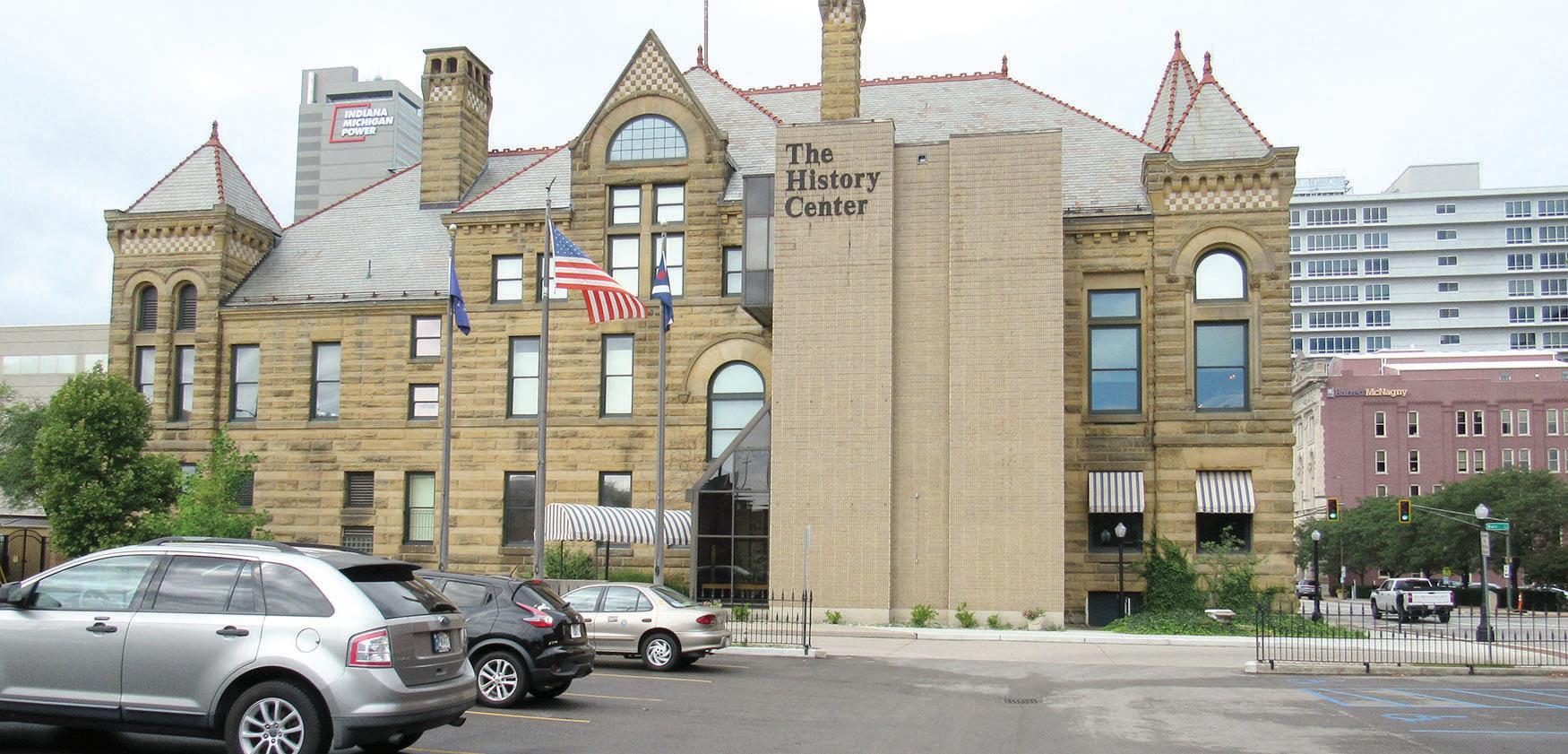

Baptiste de Richardville. Probably the most valuable piece in the collection is the fold-up camp bed of General Mad Anthony Wayne. He came
to the area in 1794 with the singular purpose of constructing a military fort that would control the region. Following its Continued on page 23





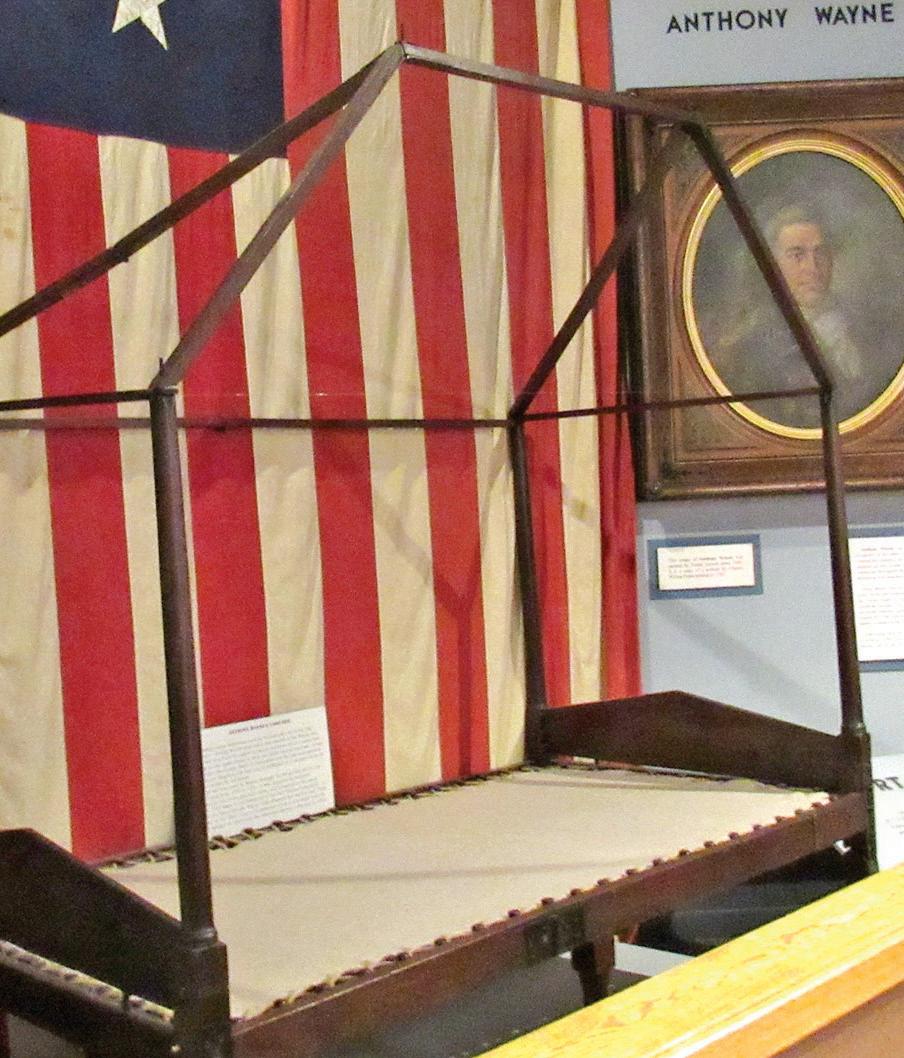
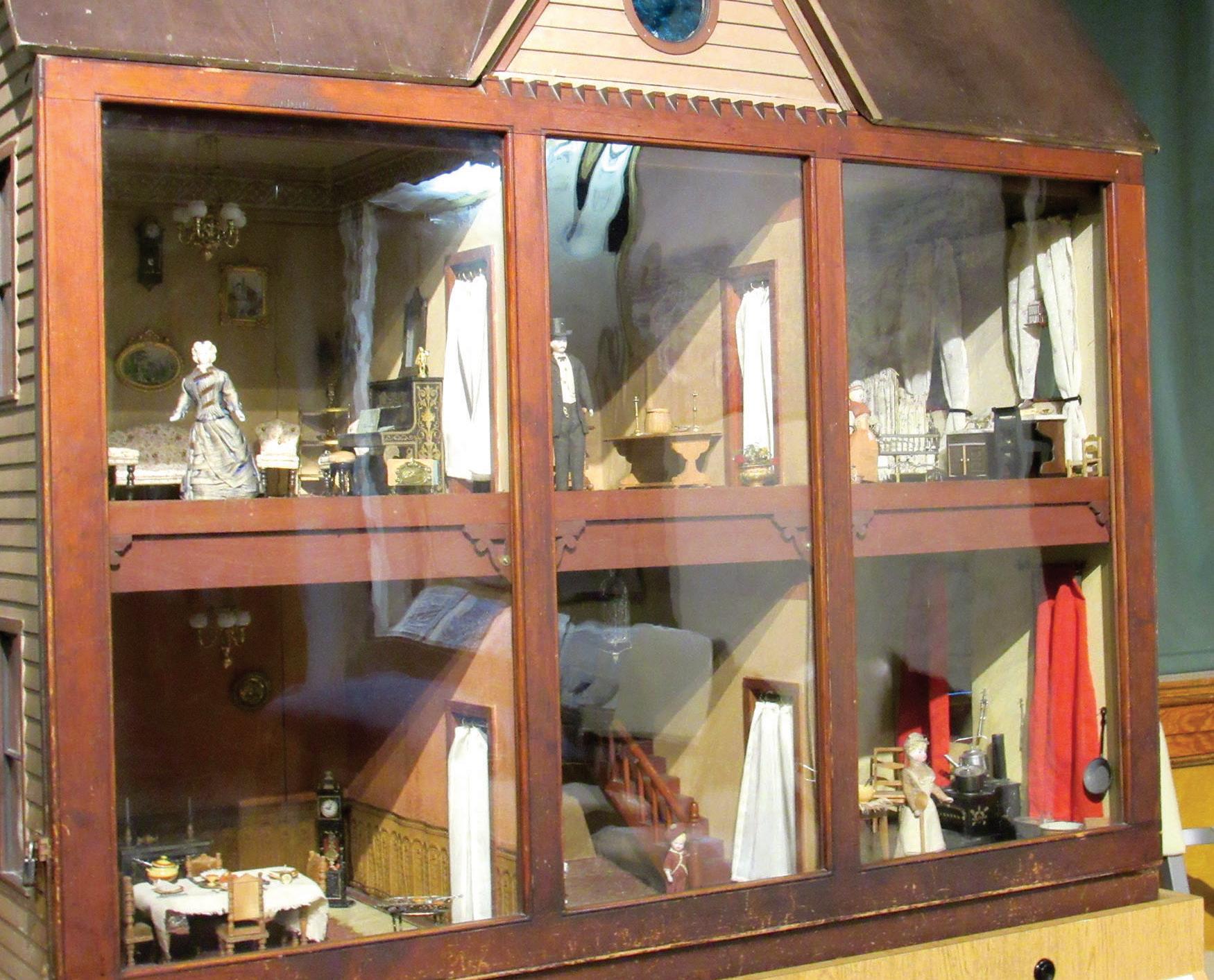
Continued from page 22
construction, he left and never returned. The fort was named after him and also became the name of the city that grew up around it. The bed is on loan from the Mary Penrose Wayne Chapter of the Daughters of the American Revolution.
The History Center is a timeline that traces the growth of the area and includes special pieces, like the Farnsworth Model 4 prototype television, which was developed here in 1945 and is one of the earliest Farnsworth TVs in existence. Packard Organ Company’s number one 1872 test organ is also a highlight.
Hours are 10 a.m. to 5 p.m. Monday to Friday, 9 a.m. to 5 p.m. Saturday, and noon to 5 p.m. Sunday. Admission is $7 for adults, $5 for seniors 65 and over, and $5 for youth.














